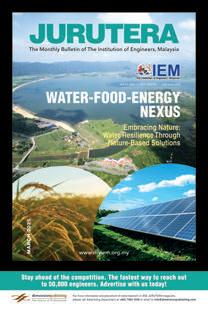
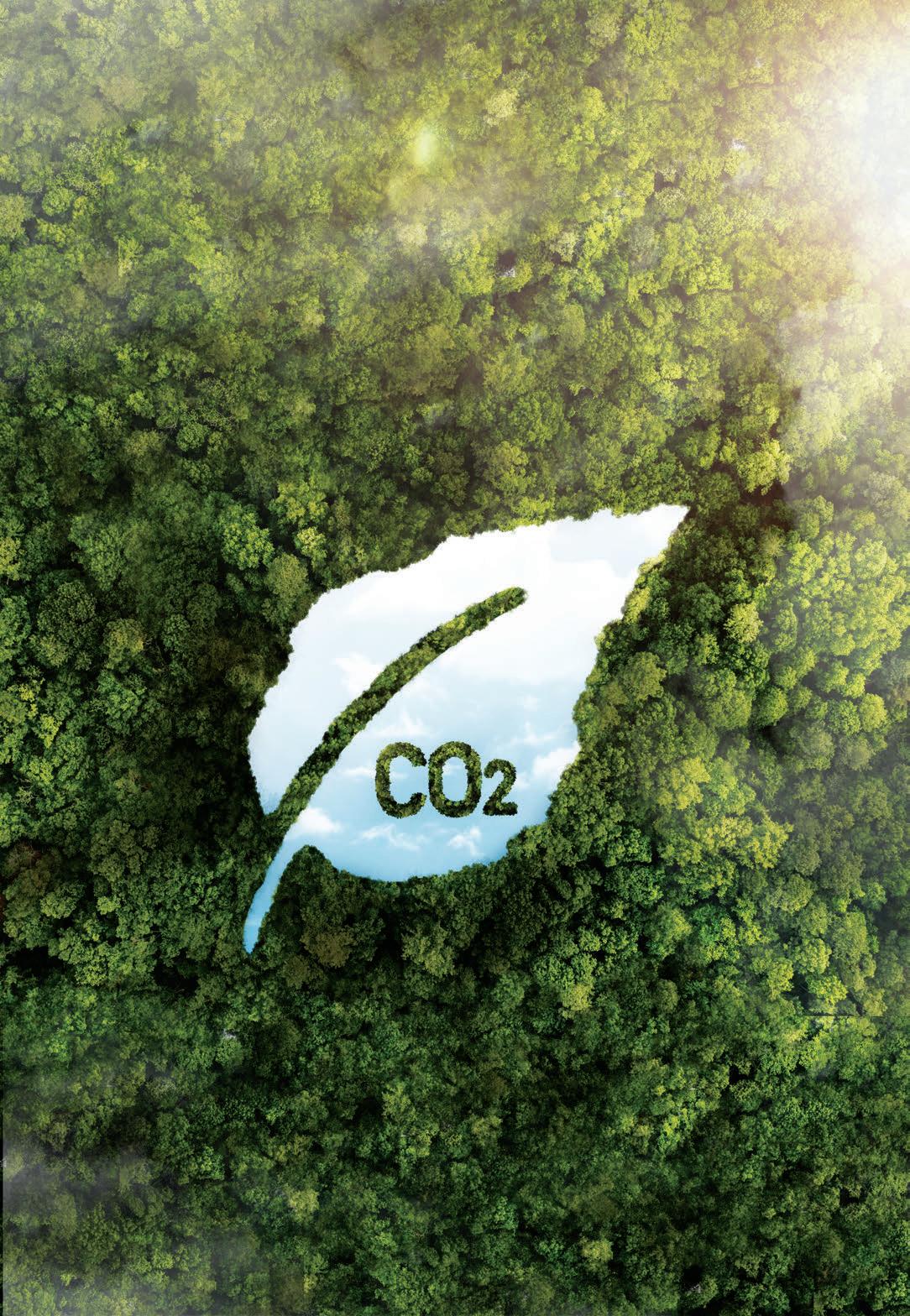



www.myiem.org.my







www.myiem.org.my


Circulation & Readership Profile
3,200/page
3,200/page
The publisher reserves the right to edit, revise or reject any advertisement deemed unsuitable or inappropriate. •
This one-time-only special rate o er is for new advertisers.
Space availability is subject to booking on a first-come-first-served basis.
Clients will provide ready-to-print artwork in PDF format with 300dpi.
Full page: 210mm x 297mm, 3mm extra bleed sizes for 4-sided.
Advertising space must be utilised before 31 December 2025.
*Please note that the above rate will be subjected to 8% SST. For overseas advertisers, an additional 25% will be charged.
Rate shown above excludes 15% advertising agency commission.
Payment term: Full advance payment.
Artwork submission deadline is on (or before) the 1st week of the prior month of publication.
After the material deadline, no cancellation or alteration to the advertisement will be entertained.
Any cancellation after signing the advertising order will result in a 50% penalty charge.
JURUTERA has an estimated readership of 200,000 professionals. Our esteemed readership consists of certified engineers, decision making corporate leaders, CEOs, government officials, project directors, entrepreneurs, project consultants, engineering consulting firms and companies involved with engineering products and services.
Publica�on month/s:
Company’s Stamp & Authorised Signature
Date































IEM Registered on 1 May 1959
IEM COUNCIL SESSION 2025/2026
President: Ir. Prof. Dr Jeffrey Chiang Choong Luin
Deputy President: Ir. Yau Chau Fong
Vice Presidents:
Ir. Prof. Dr David Chuah Joon Huang, Y.Bhg. Dato’ Ir. Wan Nazari Wan Jusoh, Ir. Dr Bernard Lim Kee Weng, Ir. Prof. Dr Tan Chee Fai, Ir. Prof. Dr Lau Hieng Ho, Ir. Simon Yeong Chin Chow, Ir. Abdul Razak Yakob
Honorary Secretary: Ir. Chen Harn Shean
Honorary Treasurer: Ir. Prof. Dr Wong Yew Hoong
Immediate Past President: YBhg. Dato’ Ir. Prof. Dr. Norlida Buniyamin
Past Presidents:
YBhg. Datuk Ir. Prof. Ow Chee Sheng, YBhg. Academician Tan Sri Dato’ Seri Ir. Prof. Emeritus Dr Chuah Hean Teik, YBhg. Dato’ Ir. Dr Lim Chow Hock, Ir. Dr Tan Yean Chin, Ir. Ong Ching Loon
Civil Representative: Ir. Tu Yong Eng
Mechanical Representative: Ir. Ng Yong Kong
Electrical Representative: Ir. Mohd. Aman Hj. Idris
Structural Representative: Ir. Dr Tan Kuang Leong
Chemical Representative: Ir. Kim Kek Seong
Representative to Other Disciplines: Ir. Dr Dhakshyani Ratnadurai
Multimedia Representative: Ir. Assoc. Prof. Dr Lai Khin Wee
Women Engineers Representative: Ir. Dr Syuhaida Ismail
Young Engineers Section Representatives:
Mr. Lim Yiren, Grad. IEM, Mr. Darshan a/l Balasubramaniam, Grad. IEM, Ms. Ong Ye Shian, Grad. IEM, Mr. Chuah Pei Lim, Grad. IEM, Ms. Nyan Shu Qi, Grad. IEM
Council Members:
Ir. Sharifah Azlina Raja Kamal Pasmah, Ir. Dr Wan Syakirah Wan Abdullah, Ir. Dr Mui Kai Yin, Ir. Shamil Abu Hassan, Ir. Wan Rizaluddin Abdullah Wan Ali, Ir. Dr Aidil Chee Tahir, Ir. Dr Angelia Liew San Chuin, Ir. Prof. Dr Zuhaina Zakaria, Ir. Begum Irdawati Dowlad Rahuman, Ir. Chong Chee Yen, Ir. Khoo Chee Min, Ir. Abdul Razak Yakob, Ir. Dr Chan Swee Huat, Ir. Alex Looi Tink Huey, Ir. Sukhairul Nizam Abdul Razak, YBhg. Dato’ Ir. Ting Chek Choon, Ir. Dr Norashikin M. Thamrin, Ir. Lee Cheng Pay, YBhg. Datuk Ir. Chin Tet Fu @ Willy, Ir. Gs. Br. Dr Zarabizan Zakaria, Ir. Choo Lay Guat, Ir. Dr Siow Chun Lim, Ir. Assoc. Prof. Dr Leong Kah Hon, Ir. Dr Sara Lee Kit Yee, Ir. Chan Wah Cheong, Ir. Dr Marianah Masrie
Council Members by Invitation: YBhg. Dato’ Ir. Dr Hj. Ahmad Sabirin Arshad , Ir. Dr Sanjayan K. V. Velautham, YBhg. Datuk Ir. Ho Hon Sang
Branch Chairman
1. Penang : Ir. Dr Lee Choo Yong
2. Southern : Ir. David Puen Ming Shen
3. Perak : Ir. Dr Tiah Oon Han
4. Pahang : Ir. Harzah Mazni Ramli
5. Kedah-Perlis : Ir. Roshasmawi Abdul Wahab
6. Negeri Sembilan : Ir. Richard Khoo Nee Keong
7. Kelantan : Ir. Hj. Nik Burhanuddin Nik Yusoff
8. Terengganu : Ir. Haji Zakaria Abdullah
9. Melaka : Ir. Lim Su Hian
10. Sarawak : Ir. Dr Angelia Liew San Chuin
11. Sabah : Ir. Mohd Yaakob Hj. Jafar
12. Miri : Ir. Meheron Selowara Joo
STANDING COMMITTEE ON INFORMATION AND PUBLICATIONS 2025/2026
Chairman: Ir. Prof. Dr Lau Hieng Ho
Vice Chairman: Ir. Wan Rizaluddin Abdullah Wan Ali
Secretary: Ir. Assoc. Prof. Dr. Hum Yan Chai
Chief Editor: Ir. Prof. Dr Lau Hieng Ho
Principal Bulletin Editor: Ir. Wan Rizaluddin Abdullah Wan Ali
Principal Journal Editor: Ir. Prof. Dr. Teo Fang Yenn
Chairman Webportal: Ir. Assoc. Prof. Dr Hasril Hasini
Resource Centre Chairman: Ir. Tay Siang Hui
Committee Members:
Ir. Lee Chang Quan, Ir. Lau Tai Onn, Ir. Yee Thien Seng, Ir. Dr Tan Kim Seah, Ir. Dr Bhuvendhraa Rudrusamy, Ir. Dr Nor Ilia Anisa Aris, Ir. Ts. Wong Chee Fui, Ir. Dr Moey Lip Kean, Ir. Begum Irdawati Dowlad Rahuman, Ms. Michelle Lau Chui Chui, Ir. Dr Marianah Masrie
EDITORIAL BOARD 2025/2026
Chief Editor: Ir. Prof. Dr. Lau Hieng Ho
Principal Bulletin Editor: Ir. Wan Rizaluddin Abdullah Wan Ali
Committee Members:
Ir. Alex Looi Tink Huey, Ir. Dr Tan Kim Seah, Ir. Razmahwata Mohd Razalli, Ir. Prof. Dr Teo Fang Yenn, Ir. Lau Tai Onn, Ir. Yee Thien Seng, Ms. Michelle Lau Chui Chui, Ir. Ahmad Rafidi Mohayiddin, Ir. Lee Chang Quan, Dr. Sudharshan N. Raman, Ir. Begum Irdawati Dowlad Rahuman
Bangunan Ingenieur, Lots 60 & 62, Jalan 52/4, P.O. Box 223, (Jalan Sultan), 46720 Petaling Jaya, Selangor Darul Ehsan.
Tel: 603-7890 0130 Fax: 603-7957 7678
E-mail: sec@iem.org.my Homepage:
06, June 2025



Malaysia’s Nuclear Power Journey: The Road Ahead and Lessons from the Past Evolution of Railway Technology: Are We Ready for Nuclear-Powered Trains?
Bridging Science and Practice: UKM-IWK Joint Innovation in Biosensors
Mechanical Engineering Symposium 2024
Engineering Shopping Malls VI: Pioneering Sustainability, Innovation, and Safety in Retail Spaces
She Engineers, He Supports: Rethinking Roles in a Changing Industry
July: AI, Robotics and Cybersecurity August: Solid Waste Management and Circular Economy















DIMENSION PUBLISHING SDN. BHD. [ 199701034233 (449732-T) ]
Level 18-01, PJX-HM Shah Tower, No. 16A, Persiaran Barat, 46050 Petaling Jaya, Selangor Darul Ehsan, Malaysia. Tel: +(603) 7493 1049 Fax: +(603) 7493 1047
E-mail: info@dimensionpublishing.com Website: www.dimensionpublishing.com
Chairman Robert Mebruer
CEO/Publisher Shirley Tham shirley@dimensionpublishing.com
Head of Marketing & Business Development
Joseph How joseph@dimensionpublishing.com
Production Editor Tan Bee Hong bee@dimensionpublishing.com
Contributing Writers
Putri Zanina putri@dimensionpublishing.com
Hanna Sheikh Mokhtar hanna@dimensionpublishing.com
Senior Graphic Designer
Sofia Hanis Mohd Uzir sofia@dimensionpublishing.com
Graphic Designer
Nicole Theng nicole@dimensionpublishing.com
Advertising Consultants
Tham Choon Kit ckit@dimensionpublishing.com
Accounts Cum Admin Executive Yong Yen Yin yenyin@dimensionpublishing.com
For advertisement placements and subscriptions, please contact:
DIMENSION PUBLISHING SDN. BHD. [ 199701034233 (449732-T) ]
Tel: +(603) 7493 1049 Fax: +(603) 7493 1047
E-mail: info@dimensionpublishing.com Website: www.dimensionpublishing.com
Subscription Department
E-mail: info@dimensionpublishing.com
JURUTERA MONTHLY CIRCULATION: OVER 50,000 MEMBERS
Submission or placement of articles in JURUTERA could be made to the:
Chief Editor THE INSTITUTION OF ENGINEERS, MALAYSIA (IEM)
Bangunan Ingenieur, Lots 60 & 62, Jalan 52/4, P.O. Box 223 (Jalan Sultan), 46720 Petaling Jaya, Selangor. Tel: +(603) 7890 0130 Fax: +(603) 7957 7678 E-mail: pub@iem.org.my Website: http://www.myiem.org.my
JURUTERA is published and printed monthly by Dimension Publishing Sdn. Bhd.
PUBLICATION DISCLAIMER
The publication has been compiled by both IEM and Dimension with great care and they disclaim any duty to investigate any products, process, services, designs and the like which may be described in this publication. The appearance of any information in this publication does not necessarily constitute endorsement by IEM and Dimension. There is no guarantee that the information in this publication is free from errors. IEM and Dimension do not necessarily agree with the statement or the opinion expresssed in this publication.
COPYRIGHT
JURUTERA Bulletin of IEM is the official magazine of The Institution of Engineers, Malaysia (IEM) and is published by Dimension Publishing Sdn. Bhd. The Institution and the Publisher retain the copyright over all materials published in the magazine. No part of this magazine may be reproduced and transmitted in any form or stored in any retrieval system of any nature without the prior written permission of IEM and the Publisher. © 2025, The Institution of Engineers, Malaysia (IEM) and Dimension Publishing Sdn. Bhd.
by Ir. Dr. Liew Chee Leong (Ricky)
Chairman, METD

Committed to Future-Forward Engineering
As Chairman of the Mechanical Engineering Technical Division (METD), I am pleased to present this month’s issue of JURUTERA , which brings together thought-provoking articles and technical insights from our dedicated members. From the evolution of railway technology and the potential of nuclear-powered trains to Malaysia’s nuclear energy roadmap and sustainable innovations in shopping malls, this issue reflects METD’s commitment to championing future-forward engineering discourse.
These contributions highlight the diverse yet interconnected roles that mechanical engineers play in shaping smart, resilient and energy-conscious infrastructures. The forums and feature articles showcased are not only technical narratives but are also blueprints of how innovation, policy and practical application converge in our field.
Let this issue serve both as a reference and a spark to encourage engineers across generations to embrace sustainability, adaptability, and interdisciplinary collaboration. I extend my gratitude to all contributors and sponsors for their invaluable support in strengthening our professional community. Together, let us continue advancing engineering excellence for the benefit of society and our country.
by Ir. Professor Lau Hieng Ho Chief Editor of Bulletin Editorial Board

This month, JURUTERA reflects on the growing relevance of nuclear science and technology within Malaysia’s broader engineering and energy landscape. As the nation explores new strategies to meet future sustainability goals, nuclearrelated developments are once again part of the professional conversation. The cover story features insights from the Malaysian Nuclear Agency, offering a high-level view of the potential, considerations, and developments that can shape the nation’s nuclear future. It underscores the importance of strategic foresight, policy coherence, and continued investment in engineering capabilities.
This issue also presents diverse perspectives across the engineering profession, from railway technology innovations and discussions on gender dynamics in engineering to technical forums on mechanical systems, retail infrastructure, and workplace safety. Each article contributes to a broader understanding of how engineering continues to adapt and lead in response to technological, societal, and environmental shifts. Together, these contributions reinforce JURUTERA ’s role as a platform for reflective thought, critical engagement, and professional exchange within the engineering community.
As the editorial direction continues to evolve, the editorial team remains committed to supporting the IEM mission to address both current and emerging themes in engineering practice and policy.
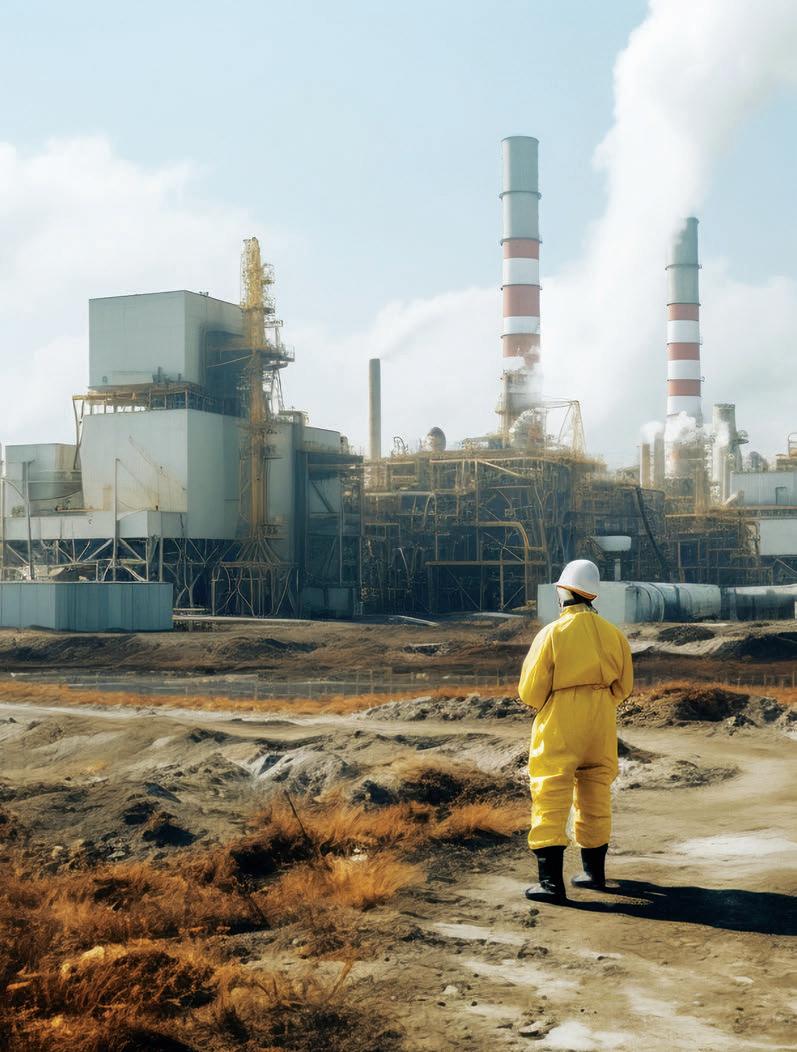

Malaysia needs a comprehensive policy to move forward the use of nuclear energy for power generation. Dr. Rosli Darmawan, the Director General of Nuklear Malaysia, shares with JURUTERA the potential and benefits of integrating nuclear power into Malaysia’s energy mix.

Malaysia’s energy sector is currently undergoing a major transformation in tandem with global energy transition — shifting from fossil-based with high carbon emissions intensity to clean and renewable energy (RE) sources (wind power, solar power, bioenergy and hydroelectric) while addressing the energy trilemma of security, affordability and sustainability. Non-RE sources, including coal, natural gas, oil and nuclear energy will deplete over time, hence the emphasis on RE sources. Malaysia’s Power Generation Development Plan 2019 has considered the energy trilemma through the implementation and adoption of the Government’s policies and planning criteria.
According to Tenaga Nasional Bhd’s Report on Peninsular Malaysia Generation Development Plan 2019 covering the period 2020–2030, Malaysia’s electricity demand over the next 11 years is expected to grow at 1.8% p.a. Over the same period, 9,321MW of new capacity is required to meet demand growth, replacing retiring power plants and ensuring system reliability, with the reserve margin projected to reach below 25% by 2030.
While RE is widely hyped as the future of energy to reduce greenhouse gas (GHG) emissions into the atmosphere, nuclear power has also been discussed as a potential part of Malaysia’s energy mix. This is based
on the United Nations’ agenda of pushing towards net-zero emissions by 2050 and keeping the increase in global average temperature below 1.5 degrees Celsius above pre-industrial levels. Regarded as the way to bridge the energy gap, nuclear energy is not only clean but also considered reliable as it addresses the intermittent nature of RE sources. Nuclear energy is also deemed important to the global clean and sustainable energy transition, which is the key to achieving net zero emissions (refers to achieving a balance between the carbon emitted into the atmosphere and the carbon removed from it). At the 28th Conference of the Parties of the United Nations Framework Convention on Climate Change (COP28) in 2023 held in Dubai United Arab Emirates, the UAE consensus reflected a clear commitment to triple RE and double energy efficiency by 2030, aiming to achieve net-zero Greenhouse Gas (GHG) emissions by 2050 and keep the increase in global average temperature below 1.5 degrees Celsius above preindustrial levels. Malaysia is one of the parties committed to the COP28 consensus.
The Malaysian government aims to achieve 70% RE installed capacity by 2050 through the National Energy Transition Roadmap (NETR) launched in August 2023. Currently,
Malaysia's energy sources are predominantly fossil fuels, with coal and natural gas contributing to over 80% of local electricity generation. Malaysia has vast potential for RE, particularly from solar and other sources. However, scientists have found that nuclear energy is one of the best options to consider when substituting fossil fuels.
Since 2009, Malaysia had been taking preparatory measures to pave the way for the implementation of a nuclear energy development programme, including establishing Nuclear Power Corporation of Malaysia as the nation's first nuclear energy programme implementing organisation. In fact, Malaysia’s foray into nuclear energy began much earlier in 1972 with the establishment of the Tun Ismail Atomic Research Centre (Pusat Penyelidikan Atom Tun Ismail, in short, PUSPATI) for the development of nuclear technology. Placed under the ambit of the then Ministry of Science, Technology and the Environment, PUSPATI spearheaded nuclear research in Malaysia with the historic establishment of Reaktor TRIGA PUSPATI, which is the nation’s first and only nuclear research reactor. TRIGA stands for Training, Research, Isotope Production and General Atomic. Located in the Nuklear Malaysia site in Kajang, Selangor, it began operations way back in 1982.
Tun Ismail Atomic Research Centre has gone through several name changes over the years, and in 2006, it was renamed Malaysian Nuclear Agency (Nuklear Malaysia) to reflect the emphasis on nuclear. The Director General of Nuklear Malaysia, Dr. Rosli Darmawan, says Malaysia has considered to develop nuclear energy as part of the country’s energy mix but with a higher potential in the usage of oil and gas and new RE sources, the focus on harnessing nuclear energy has taken a back seat. The high costs involved in exploiting nuclear energy have also made it not viable.




Moreover, he added, nuclear-related disasters such as the Fukushima nuclear accident have caused many countries to rethink the role of nuclear power in their energy mix. This includes Malaysia, which took a nonuclear stance in 2018.
However, nuclear energy remains in the agenda of powering the nation in the future although there is now less focus on it. Other major reforms can be expected to liberalise the country’s rapidly growing power sector to ensure it will be more competitive and self-reliant. Hence, in 2011, the
Government formed MyPower Corp under the Ministry of Energy, Green Technology and Water to spearhead the reforms and to drive the Malaysian Electricity Supply Industry (MESI) Transformation initiative in collaboration with the Ministry of Energy Transition and Water Transformation (PETRA). PETRA currently focuses on the implementation of its 3D initiative – Digitalisation, Decentralisation, and Decarbonisation – which underscores its commitment to advancing green investment and technology development.
Meanwhile, Dr. Rosli says Nuklear Malaysia continues to conduct research related to nuclear science, technology and engineering, in addition to harnessing nuclear energy from its TRIGA PUSPATI nuclear reactor. He adds that Nuklear Malaysia focuses on the peaceful use of nuclear technology, with significant achievements in its applications in various areas, including industry, medical, waste technology and environment, agrotechnology and biosciences, radiation health and safety, accelerator technology, radiation processing technology and nuclear technology support facilities. The facilities include laboratories, such as Non-Destructive Testing Laboratory, Electron Beam Processing Service Centre, Gamma Irradiation of Rubber Latex Plant, Radioisotope Production Laboratory, Environmental Laboratory and Radioactive Waste Management Centre. Through these facilities, nuclear science and technology assume significant role in national development.

Nuklear Malaysia’s Director of Technical Support Division, Dr. Julia Abdul Karim, says the nuclear energy sector has advanced significantly through various generations of reactor designs, from Generation 1 to the current
Generation 3+ and Generation 4 reactors, which incorporate rigorous safety measures to mitigate risks. These have robust design features and are built to withstand significant impacts, ensuring their structural integrity and safety.
She says Nuklear Malaysia TRIGA PUSPATI Reactor (RTP) is a pool-type research reactor, with 1 MW thermal energy. Its core is located at the bottom of a seven-metre deep aluminium tank and surrounded by a biological shield based on highdensity concrete. The solid fuel reactors use enriched uranium and zirconium-hydride (U-ZrH1.6). Distillation water serves as a neutron coolant and moderator, while graphite serves as a neutron reflector.
She explains that RTP was commissioned after gaining first criticality in June 1982. Elaborating, she says during normal reactor operations, nuclear fuel sustains a fission chain reaction or criticality. A reactor achieves criticality when each fission event releases a sufficient number of neutrons to sustain an ongoing series of reactions. Henceforth, the main research activities carried out by Nuklear Malaysia encompass safe operation of RTP and enhance its utilisation; ageing management programme on RTP structures, systems and components (SSC); and safety, security and safeguard of RTP. In irradiation/radioactivity, the RTPs are designed to use neutron sources in the field of nuclear, science and engineering (NSE). Facilities offered for irradiation include rotary rack (for the formation of medium and longlived radioisotopes, used for neutron activation analysis, diagnosis and therapy and non-destructive testing) and neutron beams (used for physics experiments - neutron scattering, neutron diffraction, etc, as well as neutron radiography), among others.
Nuklear Malaysia’s Director of Planning and International Relations, Dr. Fairuz Suzana bt. Mohd. Chachuli says Malaysia has developed a significant pool of local nuclear talent and has safely operated the
RTP since its inception. From 2011 to 2019, Malaysia pursued nuclear power and established a Nuclear Energy Programme Implementing Organization (NEPIO) following the International Atomic Energy Agency (IAEA) guidelines. IAEA is an intergovernmental organisation that promotes the peaceful use of nuclear energy and inhibits its use for any military purpose, including nuclear weapons. She says Malaysia is a signatory to IAEA since 1969 and IAEA has acknowledged Malaysia’s many successes in nuclearrelated research, development and commercialisation activities, including in the agricultural industry and the medical field. Although NEPIO was disbanded in 2019, IAEA still recognises Malaysia’s efforts as exemplary for newcomer countries and has identified areas for improvement should Malaysia decide to adopt nuclear power.
Proponents of nuclear power have urged Malaysia to reconsider its interest in nuclear energy for power generation. Dr. Rosli says with the advancements in technology and the eventual depletion of fossil fuels, Malaysia should revisit nuclear energy as a viable option.
Within ASEAN, Singapore has already signed the 123 Agreement (Section 123 of the United States Atomic Energy Act of 1954, titled "Cooperation With Other Nations", establishing an agreement for cooperation as a prerequisite for nuclear deals between the US and any other nation) with the US, while Thailand signed an MoU with China for nuclear co-operation in 2010. Both the Philippines and Indonesia have signed MoUs with the US in 2022. The Philippines has started exploring the potential for nuclear energy development, while Indonesia is focusing on developing its own Small Modular Reactors (SMRs) which are another promising area of advanced nuclear energy. SMRs which use fission technology are closer to becoming a reality with many experts and investors predicting SMRs will be operational by 2030. Dr. Rosli believes that SMRs will allow for phased deployment, enabling gradual integration into Malaysia’s energy grid. He adds that SMRs also offer enhanced safety features. They require lesser land and water usage and have the ability to serve smaller, decentralised energy systems.


Dr. Rosli Darmawan Director
General of Nuklear Malaysia
Dr. Rosli Darmawan was appointed Director-General of the Malaysian Nuclear Agency effective 6 September 2023. He was the agency’s former Deputy DirectorGeneral (Research and Technology Development) with relevant qualifications, experience and knowledge in nuclear engineering development and research, and nuclear reactor safety systems. He holds a Degree in Mechanical Engineering from the University of the Pacific, United States, and in Manufacturing Systems Engineering and Mechanical Engineering from Universiti Putra Malaysia.
He says these qualities align well with Malaysia’s geographic and economic landscape. However, it will take some time for SMRs to become a reality as they are still undergoing testing. Dr. Julia says Malaysia may wait for the technology to reach a certain level of maturity before adopting it.
Says Dr. Rosli, “Looking to the future, fusion technology offers virtually limitless energy with minimal environmental impact. What is required now is for Malaysia to draw up a comprehensive policy on the utilisation of nuclear energy for power generation. A thorough reactor technology assessment study should also be conducted to select the most appropriate technology for the country.”
“Our neighbours are already making progress in exploring nuclear energy. Like it or not, nuclear power will come to our region. Malaysia already has the foundation and local expertise. What we need now is our government policy to move forward. Nuclear energy takes time to develop, and investments in its development are very high running to billions but the technology is long lasting, up to about 60 years,” he says.

An area of concern is nuclear waste and its disposal, but Dr. Rosli says the safety of modern nuclear reactors comes with proven waste management protocols. This requires the long-term management of radioactive spent fuel and robust governance measures and stringent regulations to ensure a high level of safety, security and safeguards. Furthermore, Malaysia complies with stringent standards and international obligations concerning nuclear energy as well as the relevant local licensing and regulations as spelt out in the Atomic Energy Licensing Act 1984 (Act 304), which is a Malaysian law that provides for the regulation
and control of atomic energy and the use of radioactive materials.
Dr. Rosli believes Malaysia is well-positioned to integrate nuclear power into its energy mix, complementing RE sources and supporting the NETR. “We can leverage on the experience from the 2019 NEPIO. Incorporating nuclear energy could lower the emissions intensity of Malaysia’s electricity supply,” he says, noting that despite the high initial investment in nuclear technology, the long-term benefits include stable and clean energy in the long run, and ultimately securing a sustainable energy future for decades to come.






























































by:

Dr. Mohd Syukri Yahya
Director of the Institute of Nuclear Energy at UNITEN, he holds a PhD in Nuclear Engineering from KAIST, with research interests in advanced and innovative reactor technologies.
Malaysia stands at a pivotal moment in its energy transition. As we seek sustainable and reliable energy solutions, nuclear power is emerging as a viable option. With its ability to provide stable, low-carbon baseload electricity, nuclear energy can play a crucial role in enhancing Malaysia’s energy security and meeting its long-term climate commitments. However, the path to nuclear power adoption is not without challenges.
Malaysia’s interest in nuclear energy is not new. Multiple efforts over the past decades have assessed its feasibility, only to be halted due to policy shifts, economic considerations, and public concerns. Learning from these past experiences is essential to ensuring the success of current initiatives.
This article explores Malaysia’s nuclear journey by reviewing historical milestones, analysing key obstacles, and outlining a path forward. As key players in the nation’s energy landscape, engineers will play a critical role in ensuring that nuclear aspirations are grounded in technical excellence, regulatory preparedness, and public trust.
Malaysia’s engagement with nuclear technology spans a century, reflecting a long-standing familiarity with radiation and its applications. From early medical uses to advanced research and regulatory frameworks, the country has steadily built its expertise in nuclear science and technology.
Malaysia’s foray into nuclear technology dates back to February 1897, when the first X-ray machine was installed at Taiping Hospital, merely 18 months after Wilhelm Röntgen’s discovery of X-rays in November 1895. Given the logistical challenges of transporting such sophisticated equipment at the time, this demonstrated the country’s early receptiveness
to technological advancements. Since then, nuclear medicine has become a critical component of the healthcare sector, supporting cancer treatment, diagnostic imaging, and radiation therapy. Beyond medical applications, Malaysia has actively explored nuclear technology across various sectors. A key milestone was the commissioning of Reaktor TRIGA PUSPATI (RTP) in June 1982, Malaysia’s only nuclear research reactor. RTP has played a pivotal role in nuclear-related research, radioisotope production, and education, serving as a training ground for scientists and engineers.
Nuclear technology also contributed to Malaysia’s industrial and agricultural advancements. Non-destructive testing (NDT) is widely used for structural integrity evaluations, while food irradiation and mutation breeding have enhanced agricultural productivity.
However, our experience with radioactive materials has not been without challenges. The Asian Rare Earth (ARE) plant in Bukit Merah in the 1980s remains a cautionary tale, underscoring the need for stringent regulatory oversight and public engagement in radioactive waste management. In contrast, the Lynas rare earth processing facility in Gebeng demonstrates Malaysia’s improved capabilities in handling radioactive materials under stricter safety standards.
Our nuclear journey has been one of continuous learning and adaptation. With a solid foundation in nuclear technology, the country is well-positioned to take the next step in exploring nuclear power as part of its future energy mix.
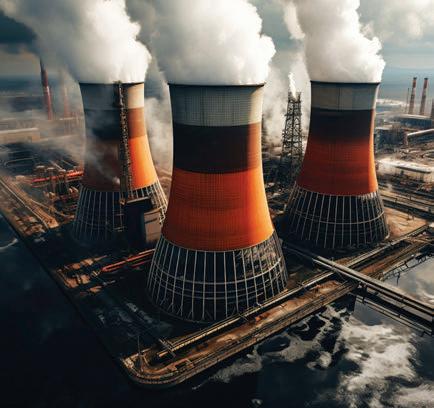
Nuclear Power Preparatory Activities: Past Attempts and Lessons Learned
Malaysia’s nuclear power journey is marked by cycles of interest, feasibility studies, and setbacks. The first structured exploration began in the 1970s, driven by concerns over energy security and economic growth. Feasibility studies under the Fourth Malaysia Plan (1981-1985) assessed nuclear energy’s role in the electricity generation. Key players included Unit Tenaga Nuklear (UTN) under the Prime Minister’s Department (now Agensi Nuklear Malaysia) and Lembaga Letrik Negara (now Tenaga Nasional Berhad or TNB). At the time, nuclear energy was viewed as a promising option for diversifying the national energy portfolio and reducing dependence on fossil fuels.
However, the initiative lost momentum as the discovery of offshore oil and gas reserves in Terengganu during the 1980s provided us with a readily available and economically viable energy source. As the country became a net energy exporter, the urgency for nuclear power diminished. With stable electricity demand and an expanding fossil fuel base, nuclear power was seen as a long-term option rather than an immediate necessity. The government instead prioritised maximising hydrocarbon resources, leading to the shelving of nuclear power plants.
By the mid-1990s, nuclear energy aspirations had largely faded, particularly with the government’s plan to transmit electricity from the Bakun Hydroelectric Dam in Sarawak to Peninsular Malaysia via a High Voltage Direct Current (HVDC) submarine cable. While research efforts continued at Agensi Nuklear Malaysia (then known as Malaysian Institute of Nuclear Technology, MINT), there was no significant progress toward establishing a nuclear power programme.
Renewed interest emerged in the late 2000s, driven by rising energy demand, volatility in crude oil prices, and carbon reduction goals. A pivotal step was the establishment of the Malaysia Nuclear Power Corporation (MNPC) in January 2011. As the Nuclear Energy Programme Implementing Organisation (NEPIO), MNPC was tasked with developing a roadmap, conducting feasibility studies, and preparing the groundwork for a future nuclear power plant. During this period, Malaysia initially aimed for a commercial operational date of 2021; this was later revised to post-2025, for a 2x1000 MWe nuclear power plant. Key preparatory activities included:
• Comprehensive feasibility assessments on technology options, economic viability, and grid integration, conducted in collaboration with stakeholders.
• Evaluation of reactor designs from South Korea, France, Russia, and the United States.
• Preliminary desktop site screening, identifying potential locations for Malaysia’s first nuclear power plant.
• Enhancing the regulatory framework to align with International Atomic Energy Agency (IAEA) standards, including steps toward establishing an independent nuclear regulatory body.
• Public outreach programmes to educate stakeholders and the public on nuclear energy.
One significant milestone was an invitation to the IAEA for an Integrated Nuclear Infrastructure Review (INIR) mission in 2016, which concluded that Malaysia was ready to proceed to the next phase of nuclear power deployment. However, political changes in May 2018 led to the dissolution of MNPC in September 2019, and nuclear power was deprioritised in favour of renewables and natural gas.
Public opposition, exacerbated by the Fukushima Daiichi nuclear accident, also posed a major challenge. Concerns over safety and radioactive waste hindered political and societal acceptance. Despite the cancellation of nuclear power plans, Malaysia continued to engage with the IAEA to enhance policy frameworks, regulatory preparedness, and capacity building.






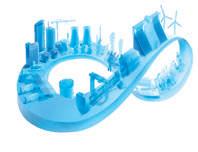









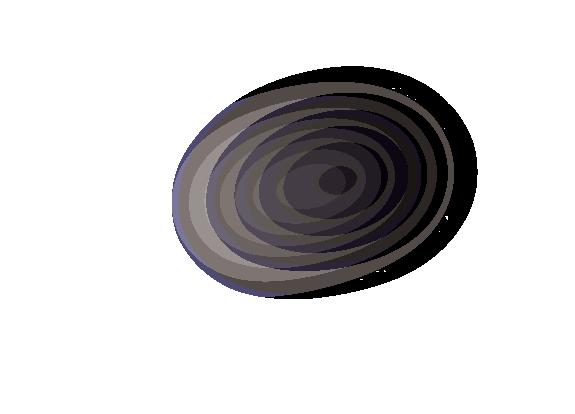
Malaysia’s nuclear power ambitions have entered a new phase, driven by policy commitments to energy transition, Environmental, Social, and Governance (ESG) requirements, and the rising demands from data centres. Lessons from the MNPC era highlighted three critical factors for success:
1. Bipartisan commitment to long-term energy planning
2. Stronger public engagement to build societal trust
3. A stable, independent regulatory framework to ensure nuclear deployment readiness.
Unlike previous attempts, the current initiative benefits from a clearer strategic vision, broader stakeholder involvement, and a renewed recognition of nuclear power’s role in sustainable energy. Malaysia has set a target of net-zero emissions by 2050, making nuclear power an attractive complement to renewable energy sources.
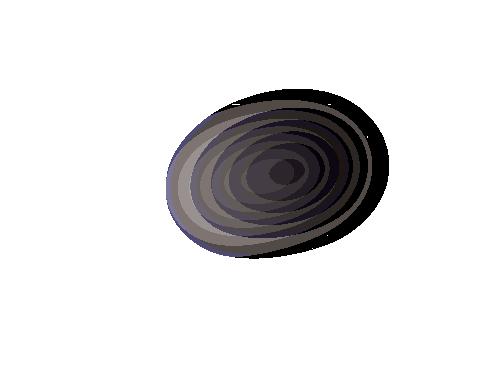






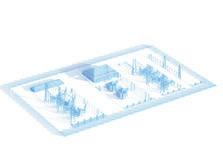

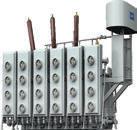





The global energy landscape also shifted significantly in favour of nuclear power. Rising fossil fuel costs, energy security concerns, and advancements in nuclear technology such as Small Modular Reactors (SMRs) have strengthened the case for nuclear energy. Many countries, including Japan and South Korea, have reversed anti-nuclear policies, recognising its role in energy independence and decarbonisation.
At home, the Malaysian government has integrated nuclear into its energy transition discussions. Regulatory updates are being aligned with IAEA 3S (safety, security, safeguards) standards. A pre-feasibility study, which was completed in December 2024, explored both conventional large reactors and SMRs, with SMRs gaining traction due to their modularity, scalability, and lower investment requirements.





The current effort involves a multi-stakeholder approach, with several key institutions shaping Malaysia’s nuclear power exploration. Despite the progress, challenges remain. Public perception continues to be a significant hurdle, as nuclear energy still faces scepticism due to past incidents like Fukushima and concerns over radioactive waste management. Transparent communication, public education, and stakeholder engagement are critical in building trust and countering misinformation. Initiatives such as academic collaborations, industry roundtables, and community outreach programmes will play a pivotal role in shaping positive public sentiment.
Integrating nuclear power into Malaysia’s existing grid infrastructure requires careful planning. Nuclear plants require high-capacity transmission networks, and potential sites must be selected based on geotechnical, environmental, and social considerations. While past feasibility studies have identified potential sites, updated assessments are necessary to align with current energy demands and regulatory requirements.
Given our lack of experience in constructing and operating a nuclear power plant, international collaboration is vital. Strategic partnerships with experienced nuclear nations will facilitate critical knowledge transfer in areas like technology selection, reactor design, and operational best practices. Continued engagement with the IAEA and participation in global nuclear forums will further enhance Malaysia’s nuclear capabilities.
In summary, the current approach to nuclear power is more strategic, collaborative, and policy-driven than previous efforts. With stronger governmental backing, enhanced institutional readiness, and alignment with global energy trends, Malaysia has the potential to successfully integrate nuclear power into its energy transition strategy, contributing to energy security, economic growth, and carbon neutrality by 2050.


Malaysia is not starting from scratch. Instead, we are building on decades of institutional knowledge, past studies, and an established regulatory framework. From the early establishment of the Centre for Application of Nuclear Energy (CRANE) to the dissolution of MNPC, the country has accumulated valuable experience in its nuclear power journey.



However, history had shown that past failures were not due to technical shortcomings but rather to policy shifts and public scepticism. Ensuring success this time around requires political commitment, structured planning, and societal acceptance.


At the heart of this effort lies the critical role of engineers, which extends beyond technical expertise. Engineers must step forward, not just as designers and operators, but also as advocates, problem-solvers, and thought leaders in the national discourse on nuclear energy. Moreover, engineers will play a key role in shaping Malaysia’s nuclear safety culture, fostering public trust through transparency, and ensuring adherence to international best practices.
This is a call to action for Malaysia’s engineering community:






• Stay informed about nuclear advancements and policy developments.
• Engage in public discourse to counter misinformation.
• Contribute expertise in research, design, construction, and operations.

• Collaborate with policymakers, regulators, and industry stakeholders to ensure a well-coordinated and sustainable nuclear rollout.
Malaysia is at a turning point in its energy future. If nuclear power is to become a reality, it will require the technical excellence, dedication, and leadership of engineers. The opportunity is here but will we rise to meet it?
NOTICE OF IEM (NEGERI SEMBILAN BRANCH) OFFICE BEARERS FOR SESSION 2025/2026




The Institution of Engineers, Malaysia (IEM) Negeri Sembilan Branch had its 32nd Annual General Meeting on 31st May 2025 and we are pleased to introduce the new office bearers for session 2025/2026:
IEM (Negeri Sembilan Branch) Office Bearers 2025/2026
Chairman Ir. Khoo Nee Keong, Richard
Vice Chairman Ir. Mohamad Firdaus Zainal
Ir. Hazlin Harun
Honorary Secretary Ir. Prem Rakesh Subramaniam
Honorary Treasurer Ir. Tan Chee Nian, Jason
Immediate Past Chairman Ir. Shahrin Amri Jahari
Committee Members Ir. Azizi Ahamad
Ir. Teh Wee Teck, David
Ir. Dr. Leong Yeng Weng
Ir. Hoo Chang Jien
Young Engineers Section Representative
Mr. Muhamad Shaiful Hussin












































by:

Ir. Yeoh Jit Shiong
A committee member of the Mechanical Engineering Technical Division, he has been involved in the railway industry and railway projects in Malaysia for the last 17 years.
The railway industry has undergone significant transformation since steam locomotives were introduced in the early 19th century. From coal-powered engines to diesel and electrified trains, the demand for more efficient and environmentally sustainable rail transport has driven continuous innovation.

As the world accelerates its transition to clean energy solutions, the transportation sector too is undergoing a major transformation to reduce carbon emissions and reliance on fossil fuels. Railways, known for their efficiency and sustainability, are at the forefront of this shift, with innovations in electrification, hydrogen fuel cells, and battery-powered locomotives leading the way. However, to achieve even greater efficiency and longterm sustainability, researchers and engineers are now exploring the feasibility of nuclear-powered trains as a groundbreaking advancement in railway technology.
Nuclear propulsion presents unique advantages over existing systems, offering unparalleled energy density, zero direct emissions, and an extended operational range without frequent refuelling. This can revolutionise
long-distance and freight rail transport, reducing dependence on conventional energy sources. However, the integration of nuclear technology into rail infrastructure comes with significant challenges, including stringent safety protocols, high initial investment costs, regulatory hurdles, and public perception concerns. Despite these obstacles, the potential of nuclearpowered trains as a next-generation clean energy solution continues to spark interest and debate in the pursuit of a sustainable future.
of Railway Propulsion
Railways have seen an evolution in propulsion systems which enhance efficiency and sustainability:
• Steam Trains (early 1800s to mid-1900s): Powered by coal and water, steam locomotives were the backbone of early railway networks but they were inefficient and highly polluting.
• Diesel Trains (1930s to present): More efficient than steam, diesel locomotives revolutionised rail transport by offering longer range and greater power.
• Maglev Trains (1960s to present): Using magnetic levitation for propulsion, maglev trains eliminate friction, achieving extremely high speeds and energy efficiency, with operational systems in Japan and China.
• Electric Trains (Late 1800s to present): Utilising overhead power lines or third rails, electric trains became popular in urban transit and high-speed rail due to their efficiency and lower emissions.
• Battery-Electric Hybrid Trains (21st Century onwards): Incorporating advanced batteries and hybrid systems, these trains reduce reliance on diesel while enabling operation on non-electrified tracks.
• Hydrogen-Powered Trains (21st Century onwards): With advancements in clean energy, hydrogen fuel cell trains have emerged as a zero-emission alternative to diesel, such as Alstom’s Coradia iLint, which operates in Germany.
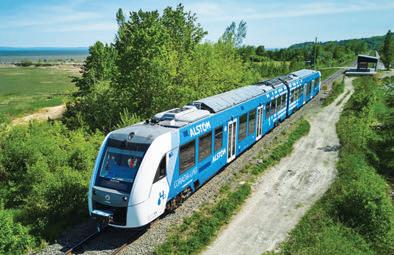
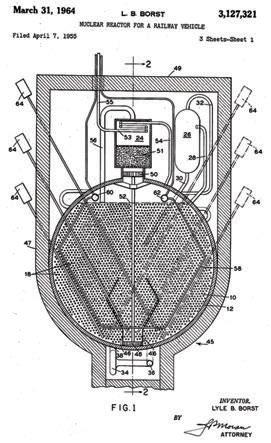
Nuclear energy, known for its high energy density and low carbon footprint, has been explored as a potential railway propulsion system. The idea is not new; during the Cold War, several nations considered nuclear-powered locomotives, but technological and safety challenges halted progress. It was first considered by Russia in the 1950s and, even as recently as 2011, news of Russia designing a nuclear-powered train surfaced. Early this year Indian Railways is also embarking on nuclear power to achieve its net zero goal by 2030. Nevertheless, we have yet to see the birth of the first Nuclear-Powered train in the world.
• Longer Range & High Energy Density: Nuclear reactors provide a continuous and reliable power source, allowing trains to travel vast distances without refuelling.
• Lower Carbon Emissions: Unlike diesel engines, nuclear power does not produce greenhouse gas emissions.
• Reduced Dependency on Fossil Fuels: With a shift toward nuclear propulsion, reliance on oil-based fuels for rail transport could decrease.
• Consistent Power Supply: Unlike battery-electric or hydrogen-powered systems that require recharging or refuelling, a nuclear reactor can operate for years without interruption.
• Safety Concerns: The presence of radioactive materials in a mobile setting poses significant safety and security risks, particularly in the event of accidents or sabotage.
• Infrastructure & Cost: Developing the necessary shielding and safety systems for nuclear-powered trains would require substantial investment in both train design and railway infrastructure.
• Public Perception & Regulatory Hurdles: Nuclear energy faces public scepticism and regulatory frameworks would need to be developed to govern the safe operation of nuclear trains.
• Disposal of Nuclear Waste: Handling and disposing of spent nuclear fuel remains a complex issue that needs to be addressed before nuclear-powered trains can become viable.
Advances in nuclear technology may overcome some of the challenges of using nuclear power in rail transport. Several innovative approaches have been proposed:
1. Compact Molten Salt Reactors (MSRs): Molten Salt Reactors (MSRs) use liquid fuel mixed with a molten salt coolant, which allows for safer operations and lower risks of meltdown. These reactors are compact and can potentially be miniaturised for railway applications.
2. Small Modular Reactors (SMRs): SMRs are designed to be more compact and safer than traditional nuclear reactors. Their modularity allows for easier integration into railway vehicles while maintaining strict safety standards.
3. Thorium-Based Nuclear Reactors: Thorium-based nuclear reactors offer a safer and more sustainable alternative to traditional uranium reactors. Thorium is more abundant, produces less long-lived waste, and has inherent safety advantages, making it a potential candidate for railway applications.
While nuclear propulsion is an exciting concept, other advanced propulsion systems are also being explored for rail transport. Table 1 shows a comparison of nuclear propulsion with alternative technologies.
• Nuclear Power: Despite its potential as a zero-emission technology, nuclear power remains controversial due to safety risks, high costs, and regulatory challenges. If advancements in SMRs and radiation shielding can mitigate these issues, nuclear-powered trains can provide an ultra-long-range, high-efficiency alternative to fossil fuel-based systems.
• Hydrogen Fuel Cells: Hydrogen-powered trains are already in operation and provide a promising solution for decarbonisation. The challenge lies in producing hydrogen sustainably; if generated using renewable electricity (green hydrogen), this technology can be
Technology
Nuclear Power Small nuclear reactors
Hydrogen Fuel Cells
Maglev Technology
Battery-Electric Hybrid
Hydrogen gas
Electromagnetic propulsion
Lithium-ion or solidstate batteries
Diesel Diesel Fuel
Electric Overhead Electric lines or Third Rail
Advantages
Long operational range, high energy density, zero emissions
Zero emissions, high efficiency, longer range than batteries
High-speed capability, energyefficient, minimal wear and tear
Zero direct emissions, regenerative braking, flexible operations
Reliable, established infrastructure, long range
Energy-efficient, no direct emissions, high-speed capable
a viable clean alternative to diesel trains. However, infrastructure for hydrogen storage and refuelling remains limited.
• Maglev Technology: Magnetic levitation is one of the most energy-efficient propulsion methods, eliminating friction and enabling high-speed travel. While maglev systems do not produce direct emissions, they require substantial infrastructure investments and can only be implemented on dedicated tracks, limiting their widespread adoption.
• Battery-Electric Hybrid: This technology is particularly useful for trains operating on non-electrified tracks. Battery-electric hybrids leverage renewable electricity, regenerative braking, and energy storage solutions. The primary challenge is battery weight and charging infrastructure, but advancements in solidstate batteries may enhance feasibility.
• Diesel Trains: While still widely used, diesel trains are increasingly being phased out due to their high carbon emissions and reliance on fossil fuels. Many rail operators are seeking to replace diesel locomotives with cleaner alternatives such as hydrogen or batteryelectric systems.
• Electric Trains: One of the most energy-efficient rail technologies, electric trains can be fully powered by renewable sources if integrated into a green energy grid. However, their dependence on overhead lines or third rails limits deployment in areas without electrification infrastructure.
Despite the challenges, nuclear-powered trains can become a reality if technological advancements address safety and regulatory concerns. Some future developments that can accelerate nuclear train adoption include:
• Advanced Radiation Shielding: New materials with superior shielding properties can make onboard nuclear reactors safer for passengers and railway workers.
Challenges
Safety concerns, high initial cost, public perception
Hydrogen production complexity, storage challenges
High infrastructure costs, requires specialised tracks
Battery weight, limited range, charging infrastructure
High carbon emissions, reliance on fossil fuels
Requires extensive electrification infrastructure, limited by track electrification
• Automated Safety Systems: AI-driven monitoring and automatic shutdown systems can ensure the safe operation of nuclear-powered locomotives.
• Public Engagement & Policy Support: Governments and organisations advocating for cleaner transport may invest in nuclear rail technology if it proves to be the most efficient and viable solution for long-haul freight and passenger travel.
The future of railway technology is centred on advanced propulsion systems that balance efficiency, sustainability, and practicality. Nuclear-powered trains offer a highenergy alternative with long-range capabilities, but the challenges related to safety, cost, and public acceptance make them a difficult proposition in the near term. However, advancements in small modular reactors, molten salt reactors, and thorium-based nuclear technology can make nuclear-powered trains a feasible solution in the coming decades.
While alternative technologies such as hydrogen fuel cells, superconducting maglev, and battery-electric hybrids present promising solutions, nuclear propulsion remains a compelling option for high-speed, long-distance rail travel. As global efforts to reduce carbon emissions continue, railway engineers and policymakers must carefully evaluate nuclear energy as a potential gamechanger in the railway industry. The next generation of rail transport may very well include nuclear-powered locomotives, driving the industry towards a cleaner and more efficient future.
[1] https://en.wikipedia.org/wiki/Steam_locomotive
[2] https://www.alstom.com/press-releases-news/2023/11/alstomscoradia-ilint-worlds-first-hydrogen-powered-train-has-won-2023environmental-sustainability-cuta-award
[3] http://large.stanford.edu/courses/2015/ph241/sanders1/docs/ US3127321.pdf








Annual Reports • Booklets • Brochures • Buntings • Business Cards
CD / DVD Replications • Calendars • Cards & Invitations • Certificates
Custom Printings • Envelopes • Folders • NCR Bill Books • Notepads
Leaflets • Letterheads • Paper Bags • Posters • Stickers • Others






by:

Dr. Lim Swee Su
Research fellow at Fuel Cell Institute (SELFUEL), UKM. Focus on electrochemical sensors, microbial fuel cells, and clean energy technologies.

Ts. Alijah Mohd Aris
Manager at IWRC, focusing on R&D, microbial applications, innovation, and environmental improvement initiatives.

Dr. Ang Wei Lun
Senior lecturer at Faculty of Engineering & Built Environment, UKM. Expert in wastewater treatment and reclamation and sustainable resource recovery.

Ts. Siti Fairuz Zainudin
Researcher at IWRC, specialising in sustainable treatment technologies, resource recovery, and green innovation in wastewater management.

Ir. Khor Bee Chin
Senior Manager of Technology & Innovation Section, IWK Sdn. Bhd., spearheading R&D projects in advance wastewater technologies.
Academia-industry collaboration often serves as a cornerstone in the development of innovative technologies that address real-world challenges. Since 2020, Universiti Kebangsaan Malaysia (UKM), through its research teams at SELFUEL and the Faculty of Engineering & Built Environment (FKAB), has actively partnered with Indah Water Research Centre (IWRC) under Indah Water Konsortium Sdn Bhd (IWK). This long-term collaboration focuses on the development of microbial electrochemical biosensor technology aimed at improving the efficiency of wastewater quality monitoring, reducing toxicity levels, and enhancing the overall performance of wastewater treatment plants.
Figure 1 illustrates how UKM sparked the idea for producing the biosensor to address the challenges faced by the industry. This biosensor technology offers
an innovative solution for the wastewater treatment industry, particularly in addressing challenges faced by IWK such as uncontrolled wastewater discharges and constraints in optimising treatment processes. By integrating an IoT-based biosensor, this system enables realtime water quality monitoring, providing immediate notifications in the event of pollution or abnormalities in wastewater treatment.
Through joint development, field testing, knowledge transfer, and long-term application, this technology ensures more comprehensive monitoring and improves treatment efficiency. As a result, wastewater treatment plants can be better controlled, reducing the risk of pollution and enhancing the effectiveness of treatment systems, in line with the need for sustainable and resilient water resource management.
The biosensor that UKM researchers developed utilises innovative microbial electrochemical technology. By harnessing the principles of electrode-microbe interaction, this biosensor functions as a real-time monitoring tool sensitive to changes in parameters within wastewater. It is not only capable of detecting toxins that can potentially disrupt treatment processes but it also acts as an early warning system to prevent costly and time-consuming treatment plant shutdowns.
Monitoring wastewater quality is a primary necessity to ensure compliance with environmental standards and to reduce pollution. Although conventional methods such as Chemical Oxygen Demand (COD) and Biochemical Oxygen Demand (BOD5) have long been used, these have key limitations, require regular manual sampling by personnel, followed by lengthy analysis times; all this ultimately contribute to high operational costs.
The UKM biosensor offers an innovative solution with the ability to provide real-time readings, automatic operation without chemical reagents, and continuous monitoring through the integration of IoT. It is capable of monitoring critical parameters such as COD and BOD5 automatically and consistently, with data obtained through an automatic data logger model. This significantly helps improve the effectiveness of wastewater treatment processes, as shown in Table 1.

Table 1: Comparison of analysis methods for COD, BOD5, and microbial electrochemical-based biosensors
Parameter COD (Chemical Oxygen Demand)
Analysis Method Chemical oxidation using a strong oxidising agent (e.g., potassium dichromate) in an acidic environment.
BOD5 (Biochemical Oxygen Demand)
Use of microorganisms to decompose organic matter in wastewater for 5 days at 20°C.
Microbial Electrochemical-Based Biosensor
Using electrogenic microorganisms that generate an electric current when organic matter decomposes, providing a direct signal of wastewater pollution.
Analysis Time Fast, around 2-3 hours. Slow, takes 5 days. Very fast, provides near realtime readings.
Chemical/ Biological Waste Generates hazardous chemical waste (e.g., silver, hexavalent chromium, mercury) that requires special handling and disposal.
Cost Higher due to the use of expensive chemicals such as COD reagents.
Procedure 1. Wastewater sample is mixed with an oxidising agent and heated to high temperature (150°C).
2. The sample is then analysed using a spectrophotometer to determine the concentration of decomposed matter.
Note If the sample exceeds the range of the reagent kit, the analysis must be repeated using a kit with the appropriate range to obtain accurate readings.
Does not involve toxic chemicals like COD, but produces biological waste that must be properly managed.
Lower but requires a long period for analysis.
1. Sample is placed in a BOD bottle and tightly closed after filling with a special medium.
2. Sample is incubated at 20°C for 5 days before the dissolved oxygen (DO) concentration is measured.
The entry of oxygen from the air into the BOD jar may cause inaccuracies in the measurement, thus affecting the analysis results.
The main advantages of the biosensor include:
Minimal to no chemical waste, offering a cleaner and more sustainable alternative.
Higher initial cost but cheaper long-term operation because no chemicals and reagents are required.
1. Installation of biosensors and cables according to the suitability of strategic locations that can represent the actual wastewater conditions.
2. Installation of a data monitoring system in a location that can be easily monitored.
The biosensor only needs to be installed once, without the need for continuous monitoring, as notifications will be sent automatically based on the set warning range.
1. Real-Time Monitoring: Provides immediate data on wastewater quality, enabling rapid response to any changes or pollution.
2. Automatic Operation: Reduces dependence on human labour and chemical reagents, thereby lowering operating costs.
3. IoT Integration: Enables continuous monitoring and systematic data collection, which facilitates long-term analysis and management. With the combination of microbial electrochemical technology and IoT, this biosensor not only enhances monitoring efficiency but also reduces operating costs and accelerates responses to pollution. This makes it a crucial tool in the wastewater treatment and environmental monitoring industries, while contributing to sustainability and compliance with stringent environmental standards.
Laboratory prototype and Site application: UKM initiated the project by exploring microbial electrochemical sensing as a tool for real-time wastewater monitoring. Early research used dual- and single-chamber systems to test living microorganisms as biocatalysts in controlled lab conditions. The biosensor then evolved through three key phases:
1. Lab-scale proof of concept using chamber-based designs.
2. Tubular system redesign with an open-air cathode to simplify the structure and reduce flow resistance.
3. Field deployment in real wastewater environments.





Nehemiah-OVM provides the following products and services:
- Post-tensioning solution provider
- Carpark Flat Slab
- Transfer Plate
- Beams, Box Girders
- Alternative design solutions
- Cable systems (stay cable main cable hanger)
- Bridge bearing and expansion joint
- Construction solutions (heavy lifting, ILM, etc)
- Monitoring, repairing and strengthening for structures





The Strand, Kota Damansara 47810 Petaling Jaya Selangor Darul Ehsan
Tel : 603-61426638
Fax : 603-61426693

Email : enquiry-pt@nehemiah-grp.com



In partnership with IWK and IWRC, the sensor advanced from Technology Readiness Level (TRL) 3-4 to TRL 5-6:
• TRL 3-4: Sensor calibration and performance optimisation in the lab, including integration with a cloud-based data system.
• TRL 5-6: Full deployment at wastewater treatment sites for continuous, autonomous monitoring and real-time data transmission. The biosensor now operates with remote monitoring, automated control, and real-time alert functions, demonstrating its readiness for broader application in environmental and wastewater management.
Laboratory studies were first conducted to understand how microbial fuel cells (MFCs) behaved under different environmental conditions. These included exploring microbial growth and electrochemical signals in various media. Initial efforts focused on selecting electrode materials that support microbial activity and efficient electron transfer. Figure 2(a) shows the enrichment process and material screening, where graphene and carboncoated electrodes improve interaction between microbes and the electrode surface. Figure 2(b) presents calibration results, confirming that carbon-based electrodes offer the best sensitivity and reliability in wastewater applications.


Figure 2: (a) Enrichment and material screening for suitable anode surfaces to optimise bacteria–electrode interaction and electron transfer using a dual-chamber MFC system (b) Calibration results demonstrating sensor performance and detection limits for various electrode materials; carbon-based surfaces showed the most promising outcomes (a) (b)
To simplify the sensor for real-world use, a new design using a tubular setup and membrane-electrode assembly (MEA) with an open-air cathode was developed. Figure 3(a) illustrates this setup and shows early enrichment using different cathode catalysts. Figure 3(b) shows Pt/C-based cathodes deliver the best performance, as supported by electrochemical analysis, ensuring strong microbial signals and sensor stability.
Following laboratory success, the biosensor reached TRL 3-4, with stable performance in dual- and single-chamber MFC systems. The project then advanced to TRL 5 during field testing at IWRC, using actual domestic wastewater. Figure 4(a) shows that the sensor maintained reliable signals, comparable to commercial systems.
In practice, the biosensor effectively detected daily fluctuations in wastewater quality, as shown in Figure 4(b). This included recurring drops in signal during late mornings, followed by recovery later in the day. The fast response indicated strong potential as an early warning tool for realtime environmental monitoring, especially for detecting illegal discharges or process disturbances.


Figure 3: (a) Enrichment of a simplified tubular-type MFC biosensor with a streamlined MEA and open-air cathode; catalyst screening was conducted to identify optimal cathode materials
(b) Electrochemical analysis comparing biosensor performance with different cathode catalysts, confirming Pt/C as the most effective for sensor enrichment and signal stability


4: Irregularity repeating signal dropped everyday around late morning causing anode potential and current signals to drop further before recovered at early evening



The BH Girder is an innovative and enhanced version of PSC Girder that utilizes the Bulb-T shape integrated with Half Slab which enables it to be applied over a span of longer than 60m. By adopting the latest cutting-edge technologies and innovati on, the BH Gir der has been designed to achieve the ultimate goals of “ Cost Effectiveness ”, “ Rapid Construction”, “Aesthetics” and “Safety”.



ciency


● Maximization of prestressing efficiency
● Minimization of prestressing friction loss
● Reduction of substructure cost
● Reduction of slab cost by half slab girder
● Omission of deck slab form work and s hori ng work by half slab girder
● Shorter construction period

● Design computations and analysis
● Construction drawings
● Material and c onstruction specifications
● Cost estimates
● Technical advice and c onstruction assistance
Girders (60m
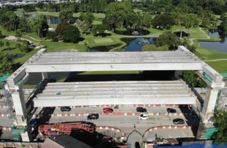
PROFESSIONAL SERVICES A partnership of (Free of charge)
NEHEMIAH TOWOONG BRIDGETECH SDN BHD. No. 45-3, Jalan PJU 5/20, The Strand, Kota Damansara 47810 Petaling Jaya, Selangor Darul Ehsan.


Tel : 012-2880918 (Mr. Jason Khor) 012-2186693 (Ir. Tan CC)
Tel : 603-61426638
Fax : 603-61426693
Email : jasonklc@nehemiah-grp.com
Email : tancc@nehemiah-grp.com
Email : enquiry@nehemiah-grp.com
Website : www.nehemiah-grp.com/towoong


For additional details, please refer to the publications cited in the References section.
The project is now advancing from TRL5 to TRL6, focusing on real-world field validation. This includes long-term testing, system upgrades, and fine-tuning the biosensor for reliable performance in various environmental conditions.
Current improvements involve:
• Strengthening the cabling and setup for stable outdoor deployment.
• Integrating IoT features for remote monitoring, alerts, and cloud-based data access.
Close collaboration with IWK and IWRC has ensured that the sensor design fits practical, on-site needs.
Technical meetings and feedback sessions with IWK’s R&D and operations teams have helped shape its hardware and software development.
While the biosensor’s early detection of irregularities such as illegal discharges has been proven, it also offers broader potential, including:
• Supporting existing monitoring in treatment plants.
• Continuous sensing in rivers, lakes, and catchments.
• Temporary or remote locations where manual sampling isn’t feasible. It’s important to note that MFC-based biosensors are complementary tools. They won’t replace lab tests but can reduce reliance on manual sampling by offering real-time alerts that guide further action. Standard analytical methods remain essential for verification and compliance.
In the future, this biosensor system could play a major role in Malaysia’s smart water and sustainability goals, contributing to urban resilience and environmental protection.
This project directly supports several Sustainable Development Goals (SDGs):
• SDG 6: Clean Water and Sanitation. Enables better wastewater monitoring using sustainable and ecofriendly technology.
• SDG 9: Industry, Innovation, and Promotes green innovation in water monitoring and the wastewater sector.
• SDG 11: Sustainable Cities and Communities. Helps reduce pollution risks, protecting ecosystems and public health.
Aligned with the tagline, New Life for Water, the project highlights a national commitment to responsible, innovative water resource use — benefitting the environment, industry, and society.
[1] Yeo, R. Y. Z., Ang, W. L., Bakar, M. H. A., Ismail, M., Salehmin, M. N. I., Yu, E. H., & Lim, S. S. (2025). Multi-Array Tubular Microbial Fuel CellBased Biosensor with Membrane Electrode Assembled Air-Cathodes. Fuel Cells, 25(1), e202400035. https://doi.org/https://doi.org/10.1002/ fuce.202400035
[2] Muhammad Farhan Hil, M., Wei Lun, A., Ahmad Razi, O., Abdul Wahab, M., Ahmad Afiq Arshad, N., Alijah, M. A., Bee Chin, K., & Swee Su, L. (2024). Assessment of the microbial electrochemical sensor (SENTRYTM) as a potential wastewater quality monitoring tool for common pollutants found in Malaysia. Environmental Monitoring and Assessment. https://doi.org/10.1007/s10661-024-12526-0
[3] Yeo, R. Y. Z., Ang, W. L., Mahmoudi, E., Ismail, M., Abu Bakar, M. H., Ahmad Razi, O., & Swee Su, L. (2024). Enrichment of Electrogenic Microbes on Surface-Modified Stainless Steel 304L for Rapid Start-Up of Microbial Electrochemical Sensors. Materials Today: Proceedings. https://doi.org/10.1016/j.matpr.2024.03.022
[4] Yeo, R. Y. Z., Chin, B. H., Hil Me, M. F., Chia, J. F., Pham, H. T., Othman, A. R., Mohammad, A. W., Ang, W. L., & Lim, S. S. (2023). Rapid Surface Modification of Stainless Steel 304L Electrodes for Microbial Electrochemical Sensor Application. ACS Biomaterials Science & Engineering, 9(11), 6034–6044. https://doi.org/10.1021/ acsbiomaterials.3c00453
[5] Lim, S. S., Chong, P. S., Jong, B. C., Abu Bakar, M. H., Wan Daud, W. R., Md. Jahim, J., & Salehmin, M. N. I. (2022). Microbial fuel cell-based sensor for Enterobacter sp. KBH6958 activity monitoring during hydrogen production: The effects of pH and glucose concentration. Journal of Applied Electrochemistry, 52(9), 1327–1342. https://doi.org/10.1007/ s10800-022-01719-5



Annual Reports • Booklets • Brochures • Buntings • Business Cards
CD / DVD Replications • Calendars • Cards & Invitations • Certificates
Custom Printings • Envelopes • Folders • NCR Bill Books • Notepads Leaflets • Letterheads • Paper Bags • Posters • Stickers • Others




In conjunction with the ENGINEER 3rd Engineering Exhibition & Conference 2024 (an event of IEM Convention & MARVEX Exhibition), the Mechanical Engineering Technical Division (METD) took on the challenge to organise a one-day symposium to celebrate the involvement and contributions of engineers, particularly in the Building Services Industry.
The Mechanical Engineering Symposium 2024, with the theme, Building Services Solutions: Sustaining Futures & Embracing ESG, was held at the Kuala Lumpur Convention Centre on 21 September 2024.
It started at 8.45 a.m. with a welcome address by the organising chairman, Ir. Tony Cheng Yew Leong, and then by the METD Chairman, Ir. Dr. Aidil Che Tahir. IEM Deputy President Ir. Yau Chau Fong gave a short keynote address as well.
by:

A heartfelt thank you goes to our Gold Sponsor, Camfil Malaysia Sdn. Bhd., our Silver Sponsors, Kamstrup Asia Pacific Sdn. Bhd., Bacfree Malaysia Sdn. Bhd., KONE Malaysia Sdn. Bhd. and Promat Sdn. Bhd., as well as our Bronze Sponsor, Carrier Malaysia Sdn. Bhd.
We hope this collaboration paves the way for future opportunities, especially in the fields of mechanical engineering and building services. Their support has been instrumental in enhancing the technological knowledge shared with our participants while ensuring cost-effective solutions for all.
Participants included developers, consultants, manufacturers, contractors, suppliers, building owners, facility managers, property managers, and university representatives. Approximately 170 attendees filled the hall at Level 3 of KLCC, marking the inaugural Engineering Symposium organised by IEM.
The national-level symposium offered an opportunity to build business relationships through the exchange of ideas, the latest trends, and techniques related to implementing building services solutions, methods, approaches and digitalisation within the building sector. Technical experts gave their views and opinions on the current building services solutions to boost the construction sector, emphasising the importance of integrating sustainable practices, modern technologies, and efficient design strategies to optimise building performance and to reduce operational costs.

One of the most exciting moments was when the audience had the opportunity to explore and experience product solutions first hand at the KLCC Exhibition Centre as live demonstrations were available at the various booths. This added value to the symposium, which ran concurrently with the ENGINEER MARVEX exhibition.
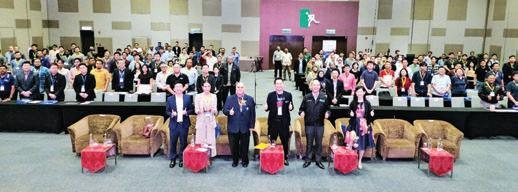
Speakers from the building services industries gave impressive presentations to the audience. The first speaker, Ms. Jessica Jong, head of sustainability and quality assurance at Sunway Malls, shared impressive mall services solutions.
Then Mr. Lee Jong Jin, Life Cycle & Digital Solutions Leader at Carrier Malaysia, presented on AI, IoT, and cloud technology that revolutionised building management systems.
Air filtration systems play an important role in the indoor air quality by removing harmful particles and pollutants from the air. This was presented by Mr. K.C Lee, Senior Manager from Camfil Malaysia Sdn. Bhd., who gave an insight into improving both health and comfort in indoor environments.
Ir. Lum Youk Lee explored the intricate relationships between energy consumption, rental costs, operational efficiency, and their collective impact on businesses.
Poontrika Walton presented a comparison between performance-based design (PBD) and the conventional prescriptive-based approach, explaining how PBD can more effectively and realistically safeguard building users.
Ir. Siow Jat Shern talked about the importance of Mechanical, Electrical, and Plumbing (MEP) systems in the development of green data centres. He outlined strategies for integrating sustainability to boost energy efficiency, lower carbon emissions, and ensure reliability.
Mr. John Cha, Regional Technical Manager at Promat Asia, shared his expertise on passive fire protection for data centres. He highlighted the importance of data centres and expressed concern that any fire incident in these facilities could cause immediate physical damage to both the infrastructure and equipment.
Mr. Terence Teoh, Head of Sustainability at Bacfree Group Malaysia, presented strategies for rainwater harvesting. He explained how utilising harvested rainwater as an alternative water source could help mitigate risks faced by businesses while contributing to the social pillar of ESG initiatives.
Mr. H.S. Yeo, Head of Services and Modernisation at KONE Elevator, presented on cutting-edge intelligent control systems designed to monitor, assess, and predict elevator performance.
There was a Q&A session after each speaker’s presentation, allowing for interactive knowledge sharing between the audience and industry experts. This facilitated valuable exchanges of insights from both building professionals and attendees.
Special thanks go to our moderator, Ir. Dr. Sara Lee, for expertly guiding the sessions, fostering engaging discussions, ensuring seamless transitions between presentations, and facilitating insightful Q&A exchanges between speakers and the audience.





The world of shopping malls is evolving rapidly, with sustainability, technology, and safety becoming critical pillars of modern retail spaces. To address these emerging trends, the Engineering Shopping Malls VI seminar was held on February 19, 2025, at Sunway Resort Hotel, Selangor. Co-organised by The Malaysia Shopping Malls Association (PPKM) and Mechanical Engineering Technical Division (METD) of The Institution of Engineers, Malaysia (IEM), the event attracted 85 industry professionals, including engineers, mall operators, and sustainability advocates.
The seminar provided a platform for knowledgesharing and collaboration, focusing on green building solutions, energy efficiency, electric vehicle (EV) integration, and safety protocols. With a stellar line-up of expert speakers, the event fostered insightful discussions on enhancing mall operations through engineering excellence.
To start the seminar, Ir. Y.L. Lum, Vice President 2 of PPK Malaysia, delivered an insightful session on the Future Outlook for Shopping Malls in 2025. He highlighted the need for
by:

retail spaces to evolve by integrating smart technology, experiential retail, and sustainability initiatives to remain competitive amid shifting consumer behaviours. His session set the stage for discussions on how engineering solutions can drive mall modernisation.
Then Mr. Alvin Chan, Senior Technical Manager at Source Code Asia, outlined a five-step approach to retrofit air handling units (AHUs) in malls. His presentation focused on assessing current inefficiencies in AHU performance, implementing smart controls and energyefficient components, and reducing operational costs while enhancing indoor air quality. His session provided practical strategies for mall operators to optimise HVAC systems, reduce energy waste, and improve sustainability metrics.



Sustainability was the subject of Mr. Ryan Lai’s session, which explored water management as a key driver in lowering the carbon footprint of a mall. Representing the BACFREE Group Malaysia, his talk centred on rainwater harvesting and greywater recycling for efficient water use, eco-friendly plumbing solutions that enhance resource conservation, and government incentives supporting sustainable water management. His insights demonstrated how strategic water conservation efforts can lead to long-term operational savings while benefiting the environment.
Ms. Jessica Jong, Head of Sustainability and Quality Assurance at Sunway Malls, addressed the financial and operational challenges of sustainability initiatives. She talked about how Sunway Malls had implemented energy-efficient lighting, cooling, and waste management systems, strategies to balance environmental responsibility with cost-effectiveness,
We are pleased to announce that the 24th AFEO Mid-Term Meeting will be hosted by the Vietnam Union of Science and Technology Associations (VUSTA) in Da Nang City, Vietnam, from 5 – 8 August 2025. This prestigious event will bring together engineering organizations from across the ASEAN region to foster collaboration, innovation, and knowledge sharing.
For more details, please visit: https://www.youtube.com/watch?v=ofWWRje wcWI&themeRefresh=1


and the importance of stakeholder engagement in driving green initiatives. Her presentation underscored that sustainability was not just an environmental necessity but rather, a long-term business strategy.
Mr. Ben Ng, General Manager at ESD GreenTech, presented an in-depth case study on 1 Utama’s journey towards sustainable mall operations. His session covered solar energy adoption and renewable power integration, advanced waste management and recycling technologies, and innovative cooling systems that reduce carbon emissions. By sharing 1 Utama’s realworld strategies, he demonstrated that shopping malls could successfully transition towards greener operations.
With electric vehicles (EVs) growing in popularity, Mr. Bruce Sui, Head of Business Development at Chargesini, said shopping malls have to invest in EV charging infrastructure. He discussed the growing consumer demand for charging stations in retail areas, revenue-generating opportunities for mall owners through EV services, and best practices for integrating EV infrastructure into commercial properties. His session highlighted the crucial role that malls will play in supporting the EV revolution.
Following this, Ir. Loo Chee Kin, Senior Consultant at Global Risk Consultants, explored the technical and regulatory aspects of EV charging bay installations. He provided a step-by-step guide on how to set up charging stations safely, with emphasis on compliance requirements, risk mitigation strategies and fire safety and electrical hazard considerations. His presentation reassured mall operators that EV infrastructure can be deployed effectively with the right engineering expertise.










The most highly rated session was Cdr. (R) Khoo Kah Hooi’s presentation on safety management in shopping malls. As Head of the Crime Prevention Unit at Bandar Utama City Centre, he stressed on the importance of crisis management planning for emergencies, fire safety protocols and evacuation strategies, and security surveillance and crime prevention measures. His session resonated strongly with attendees, reinforcing the need for robust safety systems in commercial spaces.
The Engineering Shopping Malls VI seminar proved that innovation, sustainability, and safety were the cornerstones of modern retail spaces. As shopping malls continue to evolve, engineering excellence will play a pivotal role in shaping smarter, more efficient, and environmentally responsible commercial environments. With the increasing interest in sustainability and digital transformation, future editions of this seminar will be instrumental in guiding mall operators, engineers, and policymakers toward a more resilient and forward-thinking retail industry. The road ahead is clear that a smarter, safer, and more sustainable shopping mall is the future, and engineering is at the heart of this transformation.


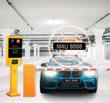








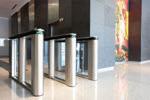





by:
As part of the week-long celebrations leading up to World Engineering Day on 4 March 2025, the Women Engineers Section of the Institution of Engineers, Malaysia (IEM) hosted a forum titled She Engineers, He Supports: Rethinking Roles in a Changing Industry
Held on 1 March 2025, the forum was one of the opening events in a series of IEM activities running from 1-7 March 2025. Held at Auditorium Chin Fung Kee, Wisma IEM, Petaling Jaya, it brought together nearly 100 IEM members from various sectors, including practising engineers, students, educators, and industry leaders. The event focused on themes of gender inclusivity, leadership, and allyship, offering a timely reflection on how engineering roles were evolving in a changing industry landscape.
Moderated by Ir. Prof. Dr. Zuhaina Zakaria, Dean at the Institute of Postgraduate Studies, Universiti Teknologi MARA (UiTM), the forum featured four panelists:
• Ir. Prof. Dr. Jeffrey Chiang Choong Luin, President of IEM.
• Ir. Ts. Irene Lock Sow Mei, Senior Process Engineer, Group Technical Solutions, PETRONAS.
• Ir. Ts. Bibi Sabrena Sakandar Khan, Project Director, Malaysia Airports.
• Ir. Ts. Dr. Harvin Kaur Gurchran Singh, Assistant Professor, Asia Pacific University of Technology & Innovation.

The session began with individual presentations from each panellist, who shared personal experiences, insights, and strategies for change. These presentations laid the groundwork for the lively Q&A session that followed, during which the audience engaged directly with the speakers on issues such as workplace bias, leadership styles, and mentorship.
In his opening remarks, Prof. Dr. Jeffrey Chiang said IEM was fully committed to enhancing gender representation in the engineering sector. He urged male engineers and leaders to become active supporters of inclusivity — through mentorship, organisational reform, and creating enabling environments where women can thrive.
Ir. Ts. Irene Lock Sow Mei shared a compelling personal journey in her presentation, Breaking Barriers: A Woman’s Journey in the Engineering Industry Drawing on her experience in the oil and gas sector, she discussed barriers such as unconscious bias and lack of female representation, while advocating for mentorship programmes, flexible workplace policies, and increasing the visibility of women in leadership.
Speaking from the perspective of project leadership, Ir. Ts. Bibi Sabrena shared practical insights on managing large-scale infrastructure projects in maledominated settings. In her presentation titled, Women in Leadership: Managing Teams & Overcoming Biases , she highlighted the importance of confidence, assertiveness,

and creating inclusive team dynamics in managing large-scale infrastructure projects. Her leadership approach emphasised integrity, boldness, and strategic communication as tools to navigate male-dominated spaces.
Rounding off the forum was Ir. Ts. Dr. Harvin Kaur, who focused on the future pipeline of women engineers through education. In her talk, The Future of Women in Engineering: Education, Mentorship & Opportunities, she presented data on the global and regional gender gap in STEM, noting that currently, women make up only 28% of the global STEM workforce. She called for early STEM exposure for girls, curriculum reform with a gender lens, and more robust university-industry collaborations to support women’s transitions into engineering careers.

During the lively Q&A session, participants engaged the four panelists on a range of issues — from breaking stereotypes to building inclusive workplace cultures. The dialogue was rich and resonated deeply with the attendees, reaffirming the need for continued conversations and structural change.
One clear message echoed loudly throughout the session: Gender inclusivity in engineering is not just

a women’s issue — it is a collective imperative. All stakeholders, from educational institutions to professional bodies, must work together to build a future where engineering talent is recognised and supported, regardless of gender.
With the Women Engineers Section leading the way with initiatives like this, IEM continues to position itself as a driving force for inclusive excellence in Malaysia’s engineering sector. It also serves as a call to action for engineers throughout the country to rethink roles, reshape norms, and redefine engineering as a profession where equity, excellence, and collaboration go hand-in-hand.

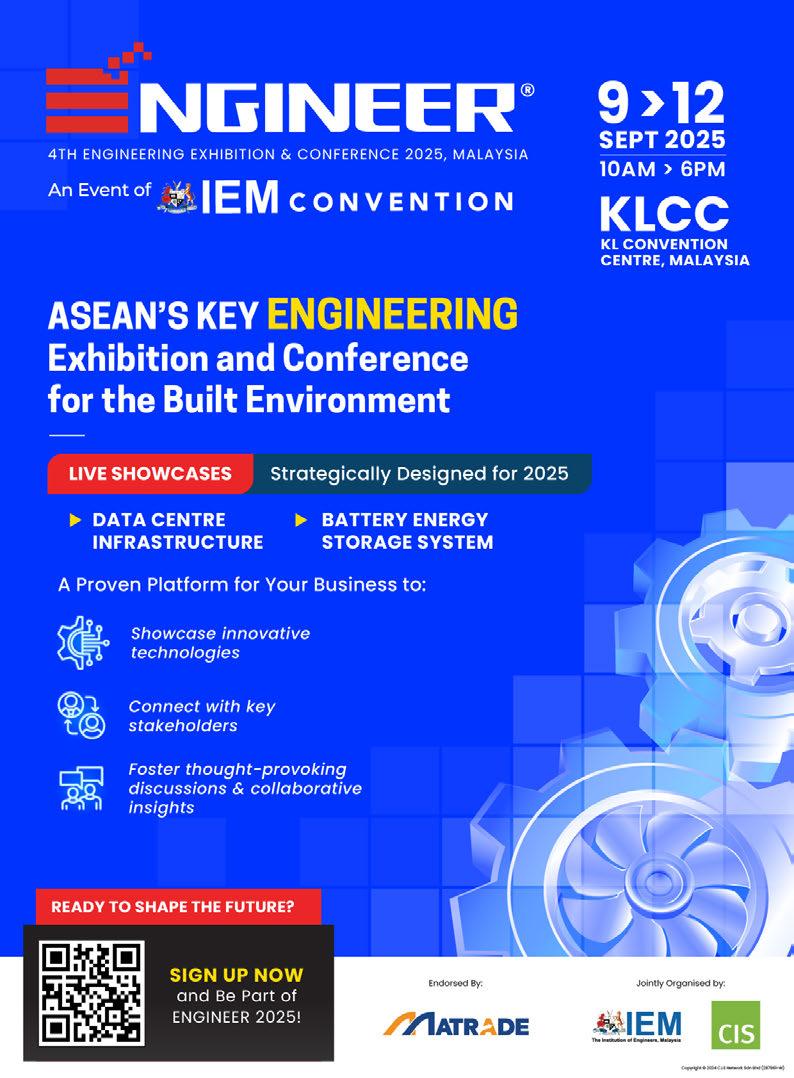
Stepping off the plane into the open concept airport in Koh Samui in Thailand was a pleasant though unfamiliar experience. The design of the airport is a harmonious blend of functionality and the natural beauty of the island. The open-air terminal buildings feature traditional Thaistyle architecture, incorporating natural materials such as wood and bamboo to create a relaxing atmosphere
Taking advantage of the tropical climate, the terminal buildings are strategically designed to optimise natural airflow and natural light for passenger comfort as well as for efficient airport operations. As Koh Samui is one of Asia’s top tropical island destinations, the airport is a stunning example of on-growing tourism and preservation of local beauty.


The Institution of Engineers, Malaysia

Jointly Organised between Geotechnical Engineering Technical Division (GETD) & Malaysian Geotechnical Society (MGS)
DATE : 3-4 DECEMBER 2025
TIME : 9.00 A.M. - 6.00 P.M.
VENUE : GRAND WYNDHAM, BANGSAR
Conference Themes

We invite submissions on a wide range of topics, including but not limited to:
• Soil Mechanics and Foundation Engineering
• Slope Stability and Landslides
• Ground Improvement Techniques
• Geosynthetics applications in Geotechnical Engineering
• Deep Excavations
• Soil Investigation and Testing
• Environmental Geotechnics
• Pavement Foundation
• Geotechnical Aspects of Sustainable Development
• Case Histories and Practical Applications on Megaprojects
• Abstracts should be no more than 300 words and not exceeding two (2) pages.
• Full papers must be written in English and submitted in Microsoft Word and PDF file format.
• All submissions must be original and not previously published or under consideration for publication elsewhere.
• Papers will be peer-reviewed and accepted papers will be published in the conference proceedings. Submission Guidelines
An Outstanding Paper Award will be presented to the best paper submitted to the conference. The award will recognize exceptional research, innovation, and contribution to the field of geotechnical engineering. The winning paper will be selected by a panel of experts and announced during the conference. The selected paper will also be considered to be published under an International indexed publications, subject to approval by the panel of experts.
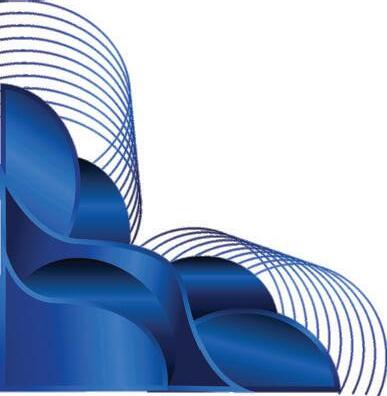
Important Dates
Abstract submission deadline
Notification of abstract acceptance
Full paper submission deadline
Notification of paper acceptance
Submission of the presentation slide
Conference day
: 28th February 2025
: 31st March 2025
: 1st July 2025
: 15th September 2025
: 15th October 2025
: 3rd & 4th December 2025
Submission of abstracts/full papers and enquiries:
All abstracts and full papers shall be submitted to the Organising Committee via email to, Ms Aisyah at: mgc2025@gmail.com or Tel: 03-7890 0132
We look forward to your contributions and to welcoming you to the Malaysia Geotechnical Conference 2025!
To all Members,
Date: 22 May 2025
LIST OF CANDIDATES ELIGIBLE TO SIT FOR THE PROFESSIONAL INTERVIEW FOR THE YEAR 2025
The following is a list of candidates who are eligible to sit for the Professional Interview for the year 2025.
According to the IEM Bylaws, Section 3.8, the names listed below are published as eligible candidates to become Insitution Members, provided that they pass the Professional Interview in 2025.
If there are any Corporate Members who have objections against any candidate deemed unsuitable to sit for the Professional Interview, a letter of objection can be submitted to the Honorary Secretary, IEM. A letter of objection must be submitted within one month from the date of publication.
Ir. Chen Harn Shean IEM Honorary Secretary
NEW APPLICATION
NAME QUALIFICATION
CIVIL ENGINEERING
DANION A/L LEWIS BE (USM) (CIVIL, 2001)
ELECTRICAL ENGINEERING
MUHAMAD AMIN BIN ZAINI BE (UTHM) (ELECTRICAL, 2015)
MECHANICAL ENGINEERING
SACHIN SHARMA ASHOK KUMAR BE (WICHITA) (MECHANICAL, 2011) MSc HONS (WICHITA) (MECHANICAL, 2012) PhD (UM) (2023)
AZIZI IRWANDY BIN YAACOB BE (UTM) (MECHANICAL, 2002)
AHMAD NAZARENE BIN KADRI BE (SOUTHAMPTON) (MECHANICAL,1999) MEMBER TRANSFER
MEMBERS NO. NAME QUALIFICATION
CIVIL ENGINEERING
85724 CHE MOHD HILMI SAFIUDDIN BIN CHE JAMALUDIN MAHMUD BE (UITM) (CIVIL, 2018) MSc HONS (UITM) (CIVIL, 2020)
72603 AL SHARIF BIN SALAZAR BE (UKM) (CIVIL, 2010)
127549 WAN SENG HONG BE (CURTIN) (CIVIL & CONSTRUCTION, 2020)
128364 NAZRUL AMIN BIN HASSAN BE (SOUTH WALES (CIVIL, 2012)
57547 OOI CHEE KWANG BE (USM) (CIVIL, 2001)
100929 ANG CHUNG CHERN BE (UTAR) (CIVIL, 2018)
77983 LIM WEN YEE BE (UTAR) (CIVIL, 2018)
CHEMICAL ENGINEERING
35654 LIM SWEE SU BE HONS (UKM) (BIOCHEMICAL, 2008) MSc HONS (UKM) (CHEMICAL) & PROCESS, 2011) PhD (NEWCASTLE) (2019)
47961 MUHAMMAD AZLAN BIN NAZERI BE (UMP) (CHEMICAL, 2012) MSc HONS (UMP) (CHEMICAL, 2018)
ELECTRICAL ENGINEERING
129847 CHE AZUAN NIZAM BIN CHE ABDUL RAHMAN BE (UM) (ELECTRICAL, 2011)
MECHANICAL ENGINEERING
119015 LUI KAI LUN BE (MMU) (MECHANICAL, 2018)
31851 LEE SOO EU BE (USM) (MECHANICAL, 2011)
86191 HON LAI HOONG BE (LIVERPOOL JOHN MOORES) (MECHANICAL & MANUFACTURING, 2004) ME HONS (UNITEN) (MECHANICAL, 2013)
MANUFACTURING ENGINEERING
94249 MUHAMMAD KHAIRUL AFFIQ BIN JASRI BE (UITM) (MECHANICAL, 2015)
MINING ENGINEERING 116474 MOHD RUZMI KHAIRI BIN RUSLI BE (USM) (MINERAL RESOURCES, 2007)
The institution expresses its gratitude to all who have contributed to the Wisma IEM Building Fund. IEM members and readers who wish to make a donation may do so by downloading the form from the IEM website at http://myiem.org.my or by contacting the secretariat at +603-7890 0130 / 136 for further information. The list of contributors for April 2025 is as shown in the table below:




The primary objec�ve of JURUTERA is to publish ar�cles of general interest to IEM members. JURUTERA provides reports and news on professional ac�vi�es, branch ac�vi�es, and current issues of interest. It also serves as one of the medium of communica�on between the Ins�tu�on and its members, providing no�ces and announcements of IEM.
Ar�cles submi�ed for publica�on in JURUTERA must be original, light reading material, unpublished elsewhere, and of interest to IEM members. Technical content should be presented in a readable and accessible style. JURUTERA is published Monthly, and can be viewed in the IEM website.
1. Since JURUTERA is not a peer-reviewed publica�on, research ar�cles can be forwarded to the Editor of IEM Journal. However, ar�cles based on research conducted are welcome.
2. A technical ar�cle are limited to 2,400 words. The word count must be reduced appropriately with each addi�onal figure or diagram or photo.
3. The author may be requested to modify the ar�cle or to clarify certain points in the ar�cle. The Editorial Board reserves the right to edit manuscripts for clarity, readability, length and content.
4. An ar�cle should communicate informa�on efficiently and effec�vely to readers. The prose should follow a coherent line of thought. Sidebars, tables and figures may be used where appropriate. All mathema�cal equa�ons must be properly checked by the authors themselves, using MS Excel formulae format. It is suggested that all ar�cles have a summary or conclusion. Technical or formal ar�cles may list the references cited using the IEE style.
5. The actual publica�on of an ar�cle is at the sole discre�on of the Editorial Board.
1. Each report shall be limited to 800 words: All reports should be concise and precise in view of the limited publica�on space. The word count must be reduced appropriately with each addi�onal figure or diagram or photo. As the sizes of such inser�ons affect their word-countequivalent, it will be le� to the judgement of the authors on the number of words to cut. The Bulle�n Editor retains the right to edit or further reduce the number of words.
2. All reports are subjected to selection for publication by the Editorial Board: To be�er determine themselves on the suitability of the reports, the Editorial Board is free to seek further advice from par�es deemed fit to do so, while avoiding conflict of interest such as asking the same Technical Division to vet their own reports.
3. Reports on activities should be value-adding to the readership: For example, reports on talks should be akin to an extended abstract from which readers could get the gist of the talk and the subsequent Q&A. Reports on visits, forums and others shall serve a similar purpose, e.g. highligh�ng cri�cal observa�ons, issues, resolu�ons that will be of interest to the readers. Other than the basic informa�on such as �tle, venue, name and affilia�on of the speaker, details which are of li�le interest to most readers (such as the �me of arrival at a des�na�on, presenta�on of a token of souvenir etc) should be excluded
4. A report should preferably be submitted within a month from the date of activity: Considering that some Technical Divisions have internal ve�ng process prior to submission, the Editorial Board will not be unreasonably strict with this requirement.
5. Although the Editorial Board will strive to publish the reports in a �mely manner, the Editorial Board reserves the right to Schedule to a later date, e.g. to provide room to clear the backlog, or to be�er fit the theme of the month. Un�l the backlog is cleared, each issue of JURUTERA will contain a mix of earlier submi�ed and rela�vely current reports.
6. It is also the discre�on of the Bulle�n Editor to decide on the reports to be uploaded in the IEM webportal “Jurutera Online”.
1. It is recommended that authors peruse published ar�cles in past issues of JURUTERA to get a feel for the style, format and nature of the ar�cles. A technical ar�cle may use a formal style, while an opinion piece may be wri�en in a very casual style. The Editorial Board prefers to refrain from imposing par�cular styles.
2. Ar�cles should be in U.K. English. Submi�ed material is expected to be of a high standard.
3. Since ar�cles submi�ed for JURUTERA are not peer-reviewed, the onus is on the author to ensure that the ar�cle is factually correct and the arguments are sound
4. An ar�cle should be wri�en in a clear and direct style. Paragraphs and sentences should be short and easily diges�ble. Long-winded and tedious technical wri�ng styles must be avoided. Wri�ng is a two-way street; remember that you are wri�ng for an audience that consists largely of both technicallyminded trained professionals and budding engineers. The reader should be moved along briskly; reading JURUTERA ought to be an enjoyable and sa�sfying ac�vity.
Authors are requested to submit a recent passport-sized photograph together with a brief profile of themselves. Authors are also encouraged to provide keywords for ar�cles submi�ed
Electronic copies of ar�cles may be sent as a�achments to the following e-mail address: pub@iem.org.my. Your documents should have meaningful and unambiguous names. Large documents may be sent compressed using the ZIP archive format and should be sent as separate a�achments.
All photographs should be of high quality, ready for typese�ng. Image files should be in JPG/JPEG format, and of a high resolu�on (at least 300 DPI.) Drawn illustra�ons must be of high quality, as they will be used “as is”. All figures, tables, graphs and photographs must be rightly cap�oned
It is necessary to adopt a conserva�ve policy on the fair use of copyrighted material. The Editorial Board reserves the right to reject ar�cles that exercises the doctrine of fair use in an excessive manner. It is up to the author to obtain permission, if necessary, for the use of copyrighted material.
An ar�cle must not overtly promote a proprietary or commercial product. Such ar�cles will be immediately rejected. Proprietary material such as trade names and proprietary terms should be avoided. Prose that seems advertorial in nature is unwelcome. An objec�ve and balanced technical discussion involving commercial products is acceptable















ADMISSION /ELECTION/ TRANSFER MEMBER
The 445th IEM Council meeting on 14 March 2025 had approved 954 members for admission/election and transfer of membership grades. The following are members name list according to engineering discipline:
Namelist of members and their qualifications as below. The Institution congratulates all the successful members.
Ir. Prof. Dr. Tan Chee Fai
Honorary Secretary, The Institution of Engineers, Malaysia, Session 2024/2025
M'ship No Name Qualification
CIVIL ENGINEERING
116246 AMIRAH HANISAH BINTI MOHD SUBKI BE HONS (UM) (CIVIL, 2022)
100234 CHEAH WING HONG BE HONS (UTHM) (CIIVL, 2021)
31192 Dr. ENG ZI XUN BE HONS (UM) (CIVIL, 2009) PhD (NATIONAL UNI. OF SINGAPORE) (PHILOSOPHY, 2016)
89360 EONG KANG YU BE HONS (UTAR) (CIVIL, 2019)
85463 FOO CHUAN FONG ME HONS (NOTTINGHAM UNI) (CIVIL, 2019)
119103 LEE WEI JIE ME HONS (NOTTINGHAM UNI) (CIVIL, 2024)
75544 MUHAMAD AZFAR BIN AHMAD BE HONS (UTHM) (CIVIL, 2018) ME (UiTM) (STRUCTURAL, 2023)
55005 RAJESWARY A/P RAJAN BE HONS (UTHM) (CIVIL, 2015)
72791 RODIAH BINTI RAZALI BE HONS (UTP) (CIVIL, 2016) 53067 SITI NUR ATIERAH BINTI PAKRUDIAN BE HONS (UMS) (CIVIL, 2015)
105904 WAN NUR DANISH WAN BIN NORBADI BE HONS (MONASH) (CIVIL, 2022)
61840 WONG MUNN SUN BE HONS (UTHM) (CIVIL, 2014)
95346 YII SENG HUA, KELVIN BE HONS (UNIMAS) (CIIVL, 2019)
COMPUTER ENGINEERING
112985 GAN AIK TONG BE HONS (UTeM) (COMPUTER, 2024)
ELECTRICAL ENGINEERING
62638 LIEW CHIA PING BE HONS (UTHM) (ELECTRICAL, 2017)
92544 MUHAMAD AMIR IZZUDDIN BIN ZOLKAFLE BE HONS (UTHM) (ELECTRICAL, 2019)
122915 MUHAMMAD KHAIRUDDIN BIN MOHD ZAIDDY BE HONS (UiTM) (ELECTRICAL, 2023)
105270 NURAFENDI BIN SHAHAROM BE HONS (UTM) (ELECTRICAL, 2024)
107746 WONG YAN BIN BE HONS (UTAR) (ELECTRICAL & ELECTRONIC, 2023)
MANUFACTURING ENGINEERING
26042 AZMAN HAFIZ BIN HJ ABDUL MAJID BE HONS (UTeM) (MANUFACTURING PROCESS, 2006)
86926 MAZLAN BIN ZAINAL BE HONS (UKM) (MANUFACTURING, 2016)
MECHANICAL ENGINEERING
118403 AMIEL MALIK BIN ZULFITRI BE HONS (MONASH) (MECHANICAL, 2023)
77938 LEONG SHI JIA, ELVIS BE HONS (UTAR) (MECHANICAL, 2017)
119641 LOO SUK SIN BE HONS (UMP) (MECHANICAL, 2024)
94465 MOHAMAD SHUKRI BIN MOHD ZAINI BE HONS (UKM) (MECHANICAL, 2021)
84445 MOHD FAZZLAN BIN MAHMUDIN BE HONS (UTM) (MECHANICAL, 2019)
75815 MOHD. SAYYID MU'AMMAR BIN MOHD. YATIM BE HONS (UiTM) (MECHANICAL, 2017)
31455 MUHAMMAD ZULFADLI BIN IBRAHIM BE HONS (UiTM) (MECHANICAL, 2011)
96168 PANG HUNG YONG BE HONS (UTAR) (MECHANICAL, 2020)
80215 SIRAJVIND WIMALA SURIYA A/L IRVING WIMALA SURIYA BE HONS (NILAI UNI.) (MECHANICAL, 2020)
125114 THAM KAI JUN BE HONS (UMP) (MECHANICAL, 2024)
MECHATRONICS ENGINEERING
88285 NABILAH SYUHADA BINTI ISHAK BE HONS (IIUM) (MECHATRONICS, 2018) ME HONS (UM) (INDUSTRIAL ELECTRONIC & CONTROL, 2020)
TRANSFER TO THE GRADE OF GRADUATE MEMBER
M'ship No Name Qualification
CHEMICAL ENGINEERING
42768 ALIF AZWAN BIN ABDUL WAHAB BE HONS (UiTM) (CHEMICAL, 2010) MSc (UiTM) (CHEMICAL, 2017)
90376 LEE WUI SIANG, WILSON BE HONS (CURTIN) (CHEMICAL, 2008)
49370 LIEW SHAN QIN BE HONS (UTAR) (CHEMICAL, 2011) MSc HONS (UPM)(BIOPROCESS & FOOD ENGINEERING, 2015) PhD (UM) (2019)
CIVIL ENGINEERING 117056 AHMAD SYAKIR BIN ZAKARIA BE HONS (UTM) (CIVIL, 2017) ME (UTM) (STRUCTURE, 2019)
72183 ANWARUL ADZIZI BIN ADENI BE HONS (USM) (CIVIL, 2004)
30143 JEGATHISH A/L KANADASAN BE HONS (UNITEN) (CIVIL, 2011) PhD (UM) (2016)
71969 LEE JIA RONG BE (UTP) (CIVIL, 2018) 24367 LEE SIONG WEE BE HONS (UTM)(CIVIL, 2003) ME HONS (UTM)(CIVIL & STRUCTURE), 2005)
108031 LEE WEI LOON BE HONS (SEGi)(CIVIL, 2013)
60607 MOHAMAD AFIQ BIN MOHAMAD SAID BE HONS (UTHM) (CIVIL, 2013)
68987 MOHAMED EMIERUL QAZZARUL BIN KHIR JOHARI BE HONS (UiTM) (CIVIL, 2015) MSc HONS (USM) (STRUCTURAL ENGINEERING, 2017)
111153 MOHD HAMZI BIN ABDULLAH BE HONS (UiTM) (CIVIL, 2012)
69117 NOOR ASYIQIN MOHD SIDEK BE HONS (UiTM)(CIVIL, 2015) MSc HONS (UiTM) (SCIENCE & STRUCTURAL, 2017)
57098 RAMES KUMAR A/L SHANMUGAM BE HONS (UTHM) (CIVIL, 2010) MSc HONS (UTM) (CONSTRUCTION MANAGEMENT), 2015)
87380 SYARIZAD BIN SALIM BE HONS (UTM) (CIVIL, 2015)
55057 TAN SOCK FUNG BE HONS (UTHM)(CIVIL, 2016)
22591 TAN WEI CHING BE HONS (USM)(CIVIL, 2000)
107637 TAN WENG SOON BE HONS (USM) (CIVIL, 2000)
85950 YEO PONG WEE BE HONS (MELBOURNE) (CIVIL, 2009) ME (MELBOURNE) (STRUCTURES, 2010)
ELECTRICAL ENGINEERING
40144 ABDUL RAHMAN BIN KAMARUDDIN BE HONS (UTM) (ELECTRICAL, 2012)
121620 ALDIL YATI BINTI YUSOF BE HONS (UTM) (BIOMEDICAL, 2009)
118704 ALFRED KUMBAR DAULIN BE HONS (UMS) (ELECTRICAL AND ELECTRONICS, 2011)
105615 LIM MUN SIENG MENG (HONS) ELECTRICAL & ELECTRONIC (ENGINEERING)
87149 MOHD FARHAN BIN ABDUL RAHIM BE HONS (UTM) (ELECTRICAL, 2009)
51598 MOHD FARHAN BIN MOHD SALIM BE (UiTM) (ELECTRICAL, 2012)
119090 NORAZMAN BIN ABU HASSAN BE HONS (UiTM) (ELECTRICAL, 2012) ME HONS (UiTM) (ENGINEERING MANAGEMENT, 2017)
127540 NUR AINNA SHAKINAH BINTI ABAS BE HONS (UiTM) (ELECTRICAL, 2017)
112634 SOLEHIN BIN BAKRIN BE HONS (UTM) (ELECTRICAL, 2010)
41473 YUGESWARY A/P THURAISAMY BE (UNITEN) (ELECTRICAL POWER ENGINEERING, 2013) ME HONS (UTM) (ELECTRICAL POWER ENGINEERING, 2018)
ELECTRONIC ENGINEERING
42019 KHAIRUDDIN BIN OSMAN BE HONS (UTeM) (ELECTRONIC, 2005) ME HONS (UTeM) (ELECTRICAL-MECHATRONICS & AUTOMATION, 2008) PhD (UTeM) (2015)
111332 MOHD SAIDI BIN IDRIS BE (UTeM) (ELECTRONICS (WIRELESS COMMUNICATION, 2012)
21166 SIVARAMAN RUKUMANGATHA RAJAH BE HONS (UPM (COMPUTER SYSTEM & COMMUNICATIONS, 2000)
MANUFACTURING ENGINEERING
115928 MOHD NOOR FATHULLAH BIN MOHD NOORDIN BE HONS (UTeM) (MANUFACTURING - MANUFACTURING MANAGEMENT, 2014)
MARINE ENGINEERING
116222 SARAVANAN A/L VENKADASALAM DIP (POLITEKNIK UNGKU OMAR) (MARINE, 2001) COC MARINE CLASS 1 (MARINE DEPARTMENT MALAYSIA) (2017)
MECHANICAL ENGINEERING
86575 CHONG KONG HAU BE HONS (MMU) (MECHANICAL, 2008)
127189 MOHD HISHAMUDDIN BIN MAT YASHIM BE HONS (UKM) (MECHANICAL & MATERIAL, 2005)
116470 MOHD TARMIDZIY BIN ISHAIK BE HONS (UTM) (MECHANICAL, 2002)
58916 PRATHABRAO A/L MUNIANDY BE HONS (UTHM) (MECHANICAL, 2016) ME HONS (BIRMINGHAM) (MECHANICAL, 2018)
116679 SHAHRIL BIN ABD RASID BE HONS (UTM) (MECHANICAL, 2002)
126101 SOH SHANG QUAN BE HONS (NEWCASTLE) (MECHANICAL, 2013)
119009 TAN SHIEN MING, PHILIP ME HONS (NOTTINGHAM) (MECHANICAL, 2016)
TRANSFER TO THE GRADE OF MEMBER (WITH PAE)
M'ship No Name Qualification
CIVIL ENGINEERING
102984 AIRIL YASREEN BIN MOHD YASSIN BE HONS (UTM) (CIVIL 2000) MSc HONS (UTM) (STRUCTURE, 2003) PhD (IMPERIAL COLLEGE) (2007)
45563 CHUA YIE SUE BE HONS (USM) (CIVIL, 2012) PhD (NUS) (2017)
93852 CLIFF JUDE ZEHNDER BE HONS (SWINBURNE) (CIVIL, 2015)
127536 FAIZULAZHAR BIN MADZLAN BE HONS (UiTM) (CIVIL, 2008) MSc HONS (UiTM) (STRUCTURAL ENGINEERING, 2017)
27088 GAN CHIN HUA BE HONS (USM) (CIVIL, 2008)
37137 GOH WAN INN BE HONS (UTHM) (CIVIL, 2011) PhD (UTHM) (2015)
35713 MOHAMED FAIRUZ BIN HUSSIN BE HONS (UTM) (CIVIL, 2010)
37140 MOHD KHAIRUL ANUAR BIN YUSOFF BE HONS (UTHM) (CIVIL 2011)
22744 MOHD YAZMIL BIN MD YATIM BE HONS (UKM) (CIVIL & STRUCTURAL, 2006) ME HONS (UTM) (CIVIL, 2009) PhD (UKM) (2014)
23973 NURIYATI ARMIDA BINTI MD RASHID BE HONS (USM) (CIVIL - CONSTRUCTION MANAGEMENT, 2002)
99385 TANG SENG HOE BE HONS (UTAR) (CIVIL, 2013)
104293 THAM WAI YANG BE HONS (USM) (CIVIL, 2016)
55816 WAN MOHD AMZAR BIN WAN MANAN BE HONS (KLIUC) (CIVIL, 2011)
25810 YONG WEI MING BE HONS (CANTERBURY) (CIVIL, 2004) ME HONS (CANTERBUR) (TRANSPORTATION, 2005)
108132 ZAID ISKANDAR BIN JARAIEE BE HONS (UTHM) (CIVIL, 2008)
ELECTRICAL ENGINEERING
116136 GUAN JUEN NAM BE HONS (UTAR) (ELECTRICAL & ELECTRONIC, 2018)
46869 MOHD HILMI BIN ABDULLAH BE HONS (UM) (ELECTRICAL, 1998)
52789 MUHAMMAD IRSYARUDIN BIN ALI BE HONS (UMP) (ELECTRICAL, 2012)
53711 SEZU PATHY A/L MUTHU KARIPPEN BE HONS (UTM) (ELECTRICAL, 2011)
MECHANICAL ENGINEERING
84497 BRYAN CHAI YEN BOON BE HONS (UTM) (MECHANICAL, 2019)
93851 JAYEE A/L
SREETHARAN BE HONS (UTM) (MANUFACTURING, 2010)
111606 MOHAMAD BIN MOHAMAD YUSOFF BE HONS (UTM) (MECHANICAL, 2019)
121100 PUA ZI RUI BSc HONS (IOWA) (MECHANICAL, 2013)
59207 SYAHRUL RAMADHAN BIN AHMAD KAMAL ARIFFIN BE HONS (UMP) (MECHANICAL, 2013) MSc HONS (UMP) (MECHANICAL, 2022)
MECHATRONICS ENGINEERING
21672 RAFIUDDIN BIN ABDUBRANI BE HONS (UniMAP) (MECHATRONIC, 2010) MSc HONS (USM) (ELECTRONIC SYSTEM, 2012)
ELECTION TO THE GRADE OF MEMBER M'ship No Name Qualification
CHEMICAL ENGINEERING
129821 CHANG JANG SEN BE HONS (UCSI) (CHEMICAL, 2025) PhD (MONASH) (2020)
CIVIL ENGINEERING
129816 JUSTIN NOEL MANIKAM BSc HONS (UTM) (CIVIL, 2001)
ELECTRICAL ENGINEERING
130264 AHMAD FAIZAL BIN BASRI BE HONS (UNITEN) (ELECTRICAL POWER, 2009)
130265 MOHD FUAD BIN ABDUL LATIP BE (UM) (ELECTRICAL, 2001)
129819 NIK HAKIMI BIN NIK ALI BE HONS (UNITEN) (ELECTRICAL POWER ENGINEERING, 2013) PhD (SOUTHAMPTON) (2017)
129822 SITI NORLINA BINTI RAMLAN BE HONS (UTM) (ELECTRICAL, 2015)
MECHANICAL ENGINEERING
130261 MOHAMMAD HAFIZ BIN ABDELLAH BE HONS (UTeM) (MECHANICAL (STRUCTURE & MATERIAL), 2012)
129820 MOHD AKMAL BIN ABU HASSAN BE HONS (LIVERPOOL) (MECHANICAL, 1997)
ELECTION TO THE GRADE OF MEMBER (WITH PAE)
M'ship No Name Qualification
CHEMICAL ENGINEERING
130263 CHIN JIT KAI BE HONS (SHEFFIELD) (CHEMICAL, 2001) PhD (SHEFFIELD) (2007)
CIVIL ENGINEERING
129818 LIM TEIK HUI BE HONS (UTM) (CIVIL, 2008)
130262 TEOH JUN SHIN BE HONS (LEEDS) (CIVIL & STRUCTURAL, 2011) MSc HONS (UiTM) (STRUCTURAL ENGINEERING, 2012)
MECHANICAL ENGINEERING
129817 AHMAD HAZIM BIN MAHADHIR BE HONS (UNIKL) (MECHANICAL, 2019)
ADMISSION TO THE GRADE OF SENIOR GRADUATE
M'ship No Name Qualification
CHEMICAL ENGINEERING
129062 CHOONG LOOH ZHEN ME HONS (THE UNI. OF MANCHESTER) (CHEMICAL ENGINEERING WITH ENVIRONMENTAL TECHNOLOGY, 2013)
CIVIL ENGINEERING
129826 ALEX TEOH BE HONS (INITI INTERNATIONAL UNI.) (CIVIL, 2014)
129827 LEONG WAH KON BE (THE UNI. OF QUEESLAND) (CIVIL, 2005)
129824 VICTOR KHOO BOO LIANG BE HONS (UNI. OF PLYMOUTH) (CIVIL, 1998)
ELECTRICAL ENGINEERING
129066 MOHAMAD FIRDAUS BIN YUSOP BE HONS (UiTM) (ELECTRICAL, 2014)
129068 MOHAMMAD NIZAMUDDIN BIN ZAINAL ABIDIN BE (UMP) (ELECTRICAL ENGINEERING - CONTROL & INSTRUMENTATIONS, 2010)
129825 SENTHAN A/L REGA BOTHY BE HONS (UNITEN) (ELECTRICAL & ELECTRONICS, 2009)
ELECTRONIC ENGINEERING
129061 GUSMAN TANTRI @ TAN NING BE HONS (MMU) (ELECTRONICS IN MAJORING IN MICROWAVE AND COMMUNICATIONS, 2007)
129065 NG WAI YIN BE HONS (THE UNI. OF NEW SOUTH WALES) (ELEECTRICAL, 1991)
129067 SYED HUSSEIN BIN SYED ALWI Adv. Dip. (UNI. OF TOULOUSE iii) (ELECTRICAL & INDUSTRIAL DATA PROCESSING, MAJOR IN AUTOMATION AND SYSTEMS, 2008) MSc (ESIEE) (ELECTRONICS & ELECTRICAL, 2007) ME (ESIEE) (ELECTRONICS & ELECTRICAL, 2009
FOOD & PROCESS ENGINEERING
129069 Dr SURIANI BINTI MAT JUSOH BE HONS (UMP) (PROCESS AND FOOD, 2001) MSc (UMP) (INDUSTRIAL AND SYSTEM ENGINEERING, 2007) PhD (UMP) (MATERIAL, 2012)
MECHANICAL ENGINEERING
129063 MUHAMMAD ILMAM AIZAT BIN RUSLI BE HONS (THE UNI. OF QUEESLAND) (MECHANICAL, 2010)
129823 SYAZWAN BIN SA'EDAN MUKHTAR BE (SHIZUOKA UNI.) (MECHANICAL, 2010)
MECHATRONICS ENGINEERING
129064 TANG GUO LIANG BE HONS (UCSI UNI.) (MECHATRONIC, 2013)
ADMISSION TO THE GRADE OF GRADUATE MEMBER
M'ship No Name Qualification
CHEMICAL ENGINEERING
129889 CHEW JING YI BE HONS (UTAR) (CHEMICAL, 2024)
129875 CHONG BOON HONG BE HONS (UTAR) (CHEMICAL, 2024)
129880 EWE KAI ZHE BE HONS (UTAR) (CHEMICAL, 2024)
129887 GEETTA A/P SUBRAMANIAN BE HONS (UTAR) (CHEMICAL, 2024)
129830 INTAN NURANISSA BINTI MOHAMAD ZAILANI BE HONS (UPM) (CHEMICAL, 2020)
129888 JEE PEI QI BE HONS (UTAR) (CHEMICAL, 2024)
129835 LAM CHI HANG BE HONS (UCSI ) (CHEMICAL, 2018)
129879 LIM YE KAI BE HONS (UTAR) (CHEMICAL, 2024)
129464 MOHD AL MUSSA BIN UGAK BE HONS (UNIMAS) (CHEMICAL, 2020)
129480 ONG SHAO JIE BE HONS (UMP) (CHEMICAL, 2024)
129472 SITI SUHANA BINTI ABD RAHMAN BE HONS (UTM) (CHEMICAL, 2018)
129833 TEO PUI KUAN BE HONS (USM) (CHEMICAL, 2020)
129890 THAM TING WOON BE HONS (UTAR) (CHEMICAL, 2024)
CIVIL ENGINEERING
129443 AHMAD FAIRUZ BIN ABU BAKAR BE HONS (UPM) (CIIVL, 2009)
129844 AQILAH SYASYA BINTI MOHD AZIZI BE HONS (UNITEN) (CIVIL, 2021)
129473 AZWA SAFIQAH BINTI DARAWATI BE HONS (UMS) (CIVIL 2020)
129854 CHAW KIT TENG BE HONS (UTP) (CIVIL, 2005)
129460 CHEW YEE JIN BE HONS (MONASH) (CIVIL, 2023)
129874 CHONG WENG KIAN BE HONS (UTAR) (CIVIL, 2024)
129465 CHUA YUEN HAUR, DANIEL BE HONS (MONASH) (CIVIL, 2023)
129479 FATIN NUR FATIHAH BINTI MAZLAN BE HONS (UTM) (CIVIL, 2015)
129453 HIFZHAN BIN SAIFUL BAHRI BE HONS (TEESSIDE UNI.) (CIVIL, 2017) MSc (UNI. OF GREENWICH) (CIVIL, 2019)
129456 HO SHUI CHUAN ME HONS (THE UNI. OF NOTTINGHAM) (CIVIL, 2016)
129859 JASON AARON ANAK HOLLIS BE HONS (UiTM) (CIVIL, 2023)
129877 LAI JUN KANG BE HONS (UTAR) (CIVIL, 2024)
129449 LEE JIA YI ME HONS (HERIOT WATT UNI.) (CIVIL, 2022)
129898 LEE JIEN SHIN BE HONS (RMIT UNI.) (CIVIL & INFRASTRUCTURE, 2018) ME (RMIT UNI.) (CIVIL, 2020)
129892 LEE LIM FAH, CONSTONTINE BE HONS (UNIMAS) (CIVIL, 2014)
129466 LEE SZE CHE BE HONS (CURTIN) (CIVIL & CONSTRUCTION, 2023)
129021 LIM HONG ZHEC ME (THE UNI. OF MELBOURNE) (CIVIL, 2021)
129864 LOOI KAH CHUN BE HONS (UCSI) (CIVIL, 2021)
129860 MOHD AMIRUL HAFIZHAT BIN MOHD YAZID BE HONS (UMS) (CIVIL, 2018)
129481 MOHD SAFAWI BIN AHMAD BE HONS (UiTM) (CIVIL, 2002)
129440 MUHAMAD KHALID BIN SULAIMAN BE HONS (UNITEN) (CIVIL, 2014)
129442 MUHD SYAKIR BIN
ZAINOL BE HONS (UiTM (CIVILINFRASTRUCTURE, 2017)
129458 NG CHIAN MING BE HONS (MONASH) (CIVIL, 2008)
129901
129469
129838
NOORSHAHIRA BINTI MD ISA BE HONS (UiTM) (CIVIL, 2023)
NORHANIFAH BINTI
SHARKAWI BE HONS (UiTM) (CIVIL, 2019)
NURFARHAN FADZLIE BIN NORDIN @ CHE MAT BE HONS (UMP) (CIVIL, 2024)
129461 NURHAMIZAH BINTI MANAN BE HONS (UiTM) (CIVIL, 2014) ME (UPM) (ENVIRONMENTAL, 2017)
129451 ONG SHI SHENG BE HONS (UTP) (CIVIL, 2023)
129060 ONG ZHEN LIANG BE HONS (UTP) (CIVIL, 2022) MSc (UTP ) (CIVIL, 2024)
129876 PUA SHAO YOU BE HONS (UTAR) (CIVIL, 2024)
129869 RAMANATHAN A/L A.GANAPATHY BE HONS (UTP) (CIVIL, 2019) ME (UTM) (STRUCTURE, 2022)
129897 SALHADEY BIN SALEH BE HONS (UTM) (CIVIL, 2001) 129866 SIM TZE YING BE HONS (SWINBURNE UNI.) (CIVIL, 2023)
129463 TAN CHANG MING, AUBREY ME HONS (THE UNI. OF MANCHESTER) (CIVIL, 2017)
129446 TAN JIA QI BE HONS (CURTIN) (CIVIL & CONSTRUCTION, 2024)
129868 TAN KAH MING ME HONS (NOTTINGHAM UNI.) (CIVIL, 2024)
129871 TENG GUAN WEI, BRENDAN ME HONS (UCL) (CIVIL, 2024)
129467 TEO CHUNG JING BE HONS (UTAR) (CIVIL, 2024)
129837 WAN NURUL AKMAL BINTI WAN ABDULLAH BE HONS (KUTTHM) (CIVILCONSTRUCTION, 2006)
129853 WONG FOOK KONG BE HONS (UKM) (CIVIL & STRUCTURAL, 2010)
129478 ZAHARUDDIN BIN SABANG BE HONS (UNIMAS) (CIVIL, 2006)
ELECTRICAL ENGINEERING
129447 CHIN SHI YI ME HONS (HERIOT-WATT UNI.) (ELECTRICAL & ELECTRONIC, 2024)
129468 CHIN SWIN YEE, AMY BE HONS (SWINBURNE UNI.) (ELECTRICAL & ELECTRONIC, 2015)
129483 CHONG ZENG XI BE HONS (THE UNI. OF SHEFFIELD) (ELECTRICAL & ELECTRONIC, 2021)
129445 DELREE ARFFEL ANAK JEFFERY ABA BE HONS (UTM) (ELECTRICAL, 2021)
129444 HEZRONI JOUNIS BE HONS (UTM) (ELECTRICAL, 2021)
129462 JUN WEI HUA BE HONS (SWINBURNE UNI.) (ELECTRICAL & ELECTRONIC, 2015)
129471 MUHAMAD ARIF HAKIMI BIN RAMLEE BE HONS (UNIMAP) (ELECTRICAL, 2023)
129459 MUHAMAD FADILAH BIN MD SALLEH BE HONS (UNIKL) (ELECTRICAL, 2018)
129482 MUHAMMAD FIRDAUS BIN ZAMURI BE HONS (UNIMAP) (ELECTRICAL SYSTEM, 2017)
129474 MUHAMMAD IRFAN BIN MOHD ZAMRY BE HONS (UTeM ) (ELECTRICAL, 2022)
129450 NUR RAIHAN BINTI NORDIN ME HONS (THE UNI. OF MANCHESTER) (ELECTRICAL & ELECTRONIC, 2020)
129470 TUNG SHIH THENG, ASA BE HONS (UNIMAP) (ELECTRICAL, 2023)
129856 ABDUL HISYAMUDDIN BIN ABD HAMID BE HONS (UTM) (ELECTRICAL, 2023)
129891 AHMAD MUZAKKIR BIN AHMAD BARHANUDIN BE HONS (UNIKL) (ELECTRICAL, 2023)
129847 CHE AZUAN NIZAM CHE BIN ABDUL RAHMAN BE HONS (UM) (ELECTRICAL, 2011)
129878 CHEW JUN HWA BE HONS (UTAR) (ELECTRICAL & ELECTRONICS, 2024)
129841 HAZIQ HAIQAL BIN ZULKIFLI BE HONS (UNITEN) (ELECTRICAL, 2021)
129845 IRMA AMALIAPUTRI BINTI YUSOP BE HONS (UiTM) (ELECTRICAL, 2005) ME (UiTM) (MANAGEMENT, 2022)
129842 MAMAT ZULI BIN AWANG HAMAT BE HONS (UiTM) (ELECTRICAL, 2005)
129831 MOHAMAD AZZAMUDIN AIMAN BIN AZIZAN BE HONS (UNIMAP) (ELECTRICAL, 2024)
129843 MOHD HAFIZ BIN JAMIL BE HONS (UNITEN) (ELECTRICAL POWER, 2008)
129848 MUHAMMAD AMIRUL ASHRAF BIN AB RAHMAN BE HONS (UNITEN) (ELECTRICAL POWER, 2019)
129829 MUHAMMAD IZWAN BIN RUSLI BE HONS (UNIMAP) (ELECTRICAL SYSTEMS, 2018)
129846 MUSNIZAM BIN MUSTAPHA BE HONS (UTM) (ELECTRICAL, 2011)
129863 ROLAND MUNANG BE HONS (UMS) (ELECTRICAL & ELECTRONICS, 2020)
129850 TEH WHEY CHAI BE HONS (UM) (ELECTRICAL, 2015)
129870 WONG HOU CHING BE HONS (UTS) (ELECTRICAL, 2022)
129894 YEE SONG JIAN BE HONS (UTP) (ELECTRICAL & ELECTRONICS, 2022)
129900 YONG WAI XIANG BE HONS (UNITEN) (ELECTRICAL POWER, 2024)
ELECTRONIC ENGINEERING
129899 HEMA LOSINI A/P JAYASHANKER BE HONS (UTHM) (ELECTRONIC, 2024)
129895 MUHAMMAD ALQAYYUM BIN MOHD ARIFIN BE HONS (UiTM) (ELECTRONICSCOMMUNICATION, 2012)
129457 MUHAMMAD SHARIFF BIN MOHD YUSOFF BE HONS (UiTM) (ELECTRONICS, 2021)
129867 RUHUL AMIN BIN SAFIEE BE HONS (UTHM) (ELECTRICAL, 2006)
129832 SITI NUR ASLINDA BINTI MOHD ZAID BE HONS (UPNM) (ELECTRICAL & ELECTRONIC - COMMUNICATIONS, 2019)
MANUFACTURING ENGINEERING
129484 KAJANE THINAKARAN BE ( REUTLINGEN UNI.) (MECHANICAL, 2020) MSc (NOTTINGHAM UNI.) (MECHANICAL, 2023)
MATERIALS ENGINEERING
129886 CHAI JING YEE BE HONS (UTAR) (MATERIALS, 2024)
MECHANICAL ENGINEERING
129852 ABDUL MUIZ BIN ABD AZIZ BE HONS (UPNM) (MECHANICAL, 2022)
129884 CHAN JIA BIN BE HONS (UTAR) (MECHANICAL, 2024)
129881 CHAN ZI WEN BE HONS (UTAR) (MECHANICAL, 2024)
129477 HII JIA YIIK, SAMUEL BE HONS (MONASH) (MECHANICAL, 2019)
129851 LEE KIENG KONG BE HONS (UTHM) (MECHANICAL, 2007)
129893 LIM HAN YE ME HONS (UNI. OF LEEDS) (MECHANICAL, 2024)
129883 LOOI WEN XIONG BE HONS (UTAR) (MECHANICAL, 2024)
129858 MOHAMAD NOOR IZWAN BIN JOHARI BE HONS (UiTM) (MECHANICAL, 2019)
129849 MOHD FIRDAUS BIN ABU HASHIM BE HONS (UTeM) (MECHANICAL - THERMAL FLUIDS, 2007)
129836 MUHAMMAD AIMAN BIN MOHD KAMAL ME HONS (UNI. OF MANCHESTER) (MECHANICAL, 2024)
129896 MUHAMMAD AKMAL BIN ZAINAL ME HONS (HERIOT-WATT UNI.) ( MECHANICAL, 2023)
129857 MUHAMMAD AMIR AISAMUDDIN BIN BADRUL HISHAM BE HONS (UNIKL) (MECHANICAL, 2023)
129452 MUHAMMAD AZRI SYAHMI BIN MOHAMED KUSNI BE HONS (UNITEN) (MECHANICAL, 2014)
129834 NUR 'ALIAH BINTI SHAFIEE BE HONS (UNITEN) (MECHANICAL, 2013)
129476 SAW HONG KEN, NIXON BE HONS (UTP) (MECHANICAL, 2016)
129873 SAW LI SHENG BE HONS (UTAR) (MECHANICAL, 2024)
129840 SHAHUL HAMEED BIN MUJIB KAMAL BE HONS (MONASH) (MECHANICAL, 2022)
129861 SIOW WEN YAO BE HONS (UTP) (MECHANICAL, 2024)
129455 SRI KRISHEN RUEHAN SRI ANAND ME HONS (HERIOT-WATT UNI.) (MECHANICAL, 2024)
129441 SYED AIMAN BIN SYED ISMAIL BE HONS (UNITEN) (MECHANICAL, 2018)
129448 THAM KIN HOOI BE HONS (UMS) (MECHANICAL, 2007)
129862 VOON YONG KANG BE HONS (UPM) (MECHANICAL, 2018)
129865 WAN MOHAMAD AMIRUL BIN WAN MOHAMAD YUSOFF BE (UNI. OF FUKUI) (MECHANICAL & SYSTEM ENGINEERING, 2022)
129475 YAZID IZZUANDI BIN OSMAN BE HONS (UNIMAS) (MECHANICAL & MANUFACTURING, 2011)
129885 YEE JET SEN BE HONS (UTAR) (MECHANICAL, 2024)
MECHATRONICS ENGINEERING
129882 CHIN ZHEE MING, CHAVEZ BE HONS (UTAR) (MECHATRONICS, 2024)
129485 CHOW TZU ERN, ELISE BE HONS (QUEST INTERNATIONAL UNI. ) (MECHATRONICS, 2024)
129839 LIM WAN TING, EVON BE HONS (SWINBURNE UNI.) (ROBOTICS & MECHATRONICS, 2014)
129872 MUHAMMAD AIMAN BIN NORAZARUDDIN BE HONS (IIUM) (MECHATRONICS, 2022)
PETROLEUM ENGINEERING
129454 ABDULRAHMAN MOHAMMED SALEH ALTOMI BE HONS (UTP) (PETROLEUM, 2019)
129855 KARTINA BINTI ALI BSc HONS (UNI. OF MISSOURI-ROLLA) (PETROLEUM, 1997)
128503 LEONG HOCK TIONG, CHRISTOPHER BE HONS (UTM) (PETROLEUM, 2021)
ADMISSION TO THE GRADE OF ENGINEERING TECHNOLOGIST GRADUATE MEMBER
M'ship No Name Qualification
INTEGRATED ENGINEERING
129535 NUR SYAZWANI BINTI MD FADILAH BAppSc HONS (UMK) (GEOSCIENCE, 2015)
ADMISSION TO THE INCORPORATED MEMBER
M'ship No Name Qualification
CIVIL ENGINEERING
129070 MAZLAN BIN ABDUL WAHAP BE.(NATIONAL INSTITUTE OF ENGINEERING TECH, INDIA) (CIVIL, 2017)
PRODUCTION ENGINEERING
129601 UMANG SHARMA BSc.Eng. (PUNJAB UNIVERSITY, INDIA) (PRODUCTION, 1984) M.BA (STRATHCLYDE UNI) (2000)
ADMISSION TO THE GRADE OF ASSOCIATE MEMBER
M'ship No Name Qualification
ELECTRICAL ENGINEERING
129602 G.SANGARALINGAM A/L GOVINDASAMY DIPL.(MIDAS INSTITUTE) (ELECTRICAL WIRING, 1996)
ADMISSION TO THE AFFILIATE MEMBER
M'ship No Name Qualification
CIVIL ENGINEERING
79263 MUHAMAD RIDUAN BIN ROSLIN B.TECH. MANAGEMENT HONS. (UTHM) (CONSTRUCTION, 2014)

REGGIE UiTM SHAH ALAM
MICHELLE VANLENTINA ANAK SIMBOH UNIMAS
MOHAMAD MUDZAKEER BIN MOHAMAD RAZEEK UKM
AISAR BIN KAMARUL NIZAL UIAM
MUHAMMAD ALIF SYAHMI BIN SAMSUFIYAN UIAM
MUHAMMAD AMIRUL FIRDAUS BIN SARMADI UiTM SHAH ALAM
129663 NUR HIJANAH BINTI MOHAMAD ZAHID UKM
129661 NUR I'FFAH BINTI ABDUL HANAN UKM 129093 NUR SYAFIQAH SYAHIRAH BINTI MUHAMMAD SHAHRIN TONY UKM
129653 NUR SYAZA NADIA BINTI MAXTAR UKM
129080 NURAFIQ DINIE BIN MOHD PIKRI UKM
129651 NUREL IMAN BAHIAH BINTI ROZALI UKM 129340 NURFARISHA NADIA RADIAH BINTI ASRAL FARHI UNIMAS
128771 NURIN NADHIRAH BINTI HAIRUDIN UiTM SHAH ALAM
129649 NURSYAHZANANI SYASYA BINTI ABD HAMID UKM
129103 NURUL KHAIRUNNISA BINTI ZAMIR AMBIA UIAM
129094 NURUL SYAHIRAH BINTI ABDUL HALIM UKM
129150
AMSYAR BIN SHAHARUDDIN UNIMAS 129652 SHARVIN A/L BALAKRISHNAN UKM 128779 SHAZANI AZRI BIN SHAIFUL HISHAM UiTM SHAH ALAM 129084 SITI NUR AFIQAH BINTI
ALLEYA ANAK MEGOIE UNIMAS
129327 ALNA AQMAR BIN ALWIE UNIMAS
129537 ALPHONSUS YU SOON WEI UTS
129689 ALYA FASIHAH BINTI RISHAMMADI UTHM PAGOH
129692 AMY ALLYANA BINTI ALPIAN UTHM PAGOH
129525 ANSON NGAM KEE MIN SWINBURNE SARAWAK
129615 ANWAR FITRI BIN SALIM UTM
128786 ARIF SYAZWAN BIN ALI ZAKAFRI UiTM SHAH ALAM 129275 ARMASA JAYAN ANAK ALBERT IRAN UNIMAS 129373 ARYNA DANIA SYAHYN BINTI NORJAIN UNIMAS 129495 BONG YEE YUAN SWINBURNE SARAWAK
129538 BRANDON CHUO ZONG HUI UTS
129643 BRYSON MINIGS ANAK WILLIE MINIG UNIMAS
129083 CARLSTEN ANAK RASIT UNIMAS
129435 CHANG ZI-XUAN
129091 CHEANG ZI SHAN
YANG RYAN
YI XUAN
SYHABRIENA ANAK
129400 IZRA YASMEEN BINTI MOHAMAD TABRIZZAL FITRY UNIMAS
129508 KAYLAN ENRICO RANYIS ANAK VICTORIA SWINBURNE SARAWAK
1293310 KELVIN TANG KEE HAN
129509 KHO NGIAP YONG
128799 KIREET A/L SIVAJOTHI
SWINBURNE SARAWAK
SWINBURNE SARAWAK
SWINBURNE SARAWAK
MASLINDA BINTI MUNDING UMS
129614 MAX WELLENCE MASIR ANAK MAXWELL SELIONG UNIMAS
129167 MELVIN NG ZHEN HONG UTM
129514 MICHAEL ANTHONY
SWINBURNE SARAWAK 129324 MIEW WENG SAM UTM
129385 MOHAMAD FARHAN ZIKRY BIN SULFII UNIMAS
129645 MOHAMAD KHAIRULNIZAM BIN HASSAN UNIMAS 129088 MOHAMMAD ZUHAIRI BIN MOHAMMAD YUSOF UTHM BATU PAHAT
129432 MOHD FAHMI BIN SAIDEH UMS
129610 MUHAMAD ZAHIM ZAKIMI BIN MUHAMAD ZAKI PUO
128787 MUHAMMAD AIMAN RUZAINI BIN MOHAMAD ASRI UiTM SHAH ALAM
129569 MUHAMMAD FAREEZ BIN SAMSUDIN UTS
128785 MUHAMMAD HAZIM UKAIL BIN AHMAD FAIZUL UiTM SHAH ALAM
129606 MUHAMMAD IZUDDIN BIN ADNAN UKM
129194 MUHAMMAD RAHMAT BIN SYARIFUDDIN UNIMAS
129684 MUHAMMAD SYAKIR AZMAN BIN ABDULLAH UTHM PAGOH
129208 MUHAMMAD WAEZ HAIKAL BIN ISHAK UiTM SHAH ALAM 129572 MUHAMMAD ZAHIDI BIN RICKY @ MOHAMMAD RAZI UTS
129375 NADZIRAH BINTI RASAIE UNIMAS
NG TIAN BAO UTS
NIK NORSYAKILA BINTI MUHAMAD GOPAL IUKL
NIK NUR AISYAH BINTI ILIAS UiTM SHAH ALAM
129605 NUR IZZATUL BALQIS BT YUSRI UiTM SHAH ALAM
129573 NUR NISRINA NABIHAH BINTI ZISMAH UTS
128783 NUR QAMARINA ARISSA BINTI ROSIDI UiTM SHAH ALAM
129574 NUR QHAIRRUNISHA BINTI MOHAMAD ARHMAN ABDULLAH UTS
129757 NUR SHAZIATUL FARAHIN BINTI BORHAN UNIMAS 129365 NURAIN BATRISYIA BINTI SENU UNIMAS 129344 NURDANIA UMAIRA BINTI OMAR UNIMAS
129687 NURIN AFRINA BT ABD RAHIM UTHM PAGOH
128796 NURUL AIN YASMIN BINTI AZHARUDIN USM 128802 NURUL AINNI BINTI MAZLAN USM 129280 NURUL ASYHIQIN BINTI SAFIAN UTHM BATU PAHAT
128780 NURUL SHALIANI BINTI AHMAD JOHARI UiTM SHAH ALAM
128801 NURUL SYAFIQAH BINTI RUSLI USM
129644 OLIYANA JANE GUDAH ANAK SANDA UNIMAS
128817 ONG ZI CONG USM
129042 OOI QI ZHI UM 128814 POH WAN YOU USM
129210 PUTRI CAMELIA IZORA BT KAMARULNIZAM UiTM SHAH ALAM 129575 RACHEL LIM MAY HUI UTS
129686 RENIE NUR ELFIYANIS BINTI LUKMAN HASAN UTHM PAGOH 128798 RISHITHARAN A/L SIVANESAN USM 128795 SATIESHWARAN A/L PARASOORAMAN USM 129673 SELLYNIE
ELECTRICAL ENGINEERING
129245 ABANG MUHAMAD HAZIQ BIN ABG HUSAINI UTM
129678 ADUKA HAIKAL BIN MD NOR RAMDON UTHM PAGOH
129715 AHMAD FAHREN ADAM BIN SULAIMAN UTHM PAGOH
129710 AHMAD MUQRI NAIM BIN AHMAD ROSSAIMI UTHM PAGOH
129702 AHMAD QUAYYUM BIN ABDULLAH UTHM PAGOH
129726 AHMAD YASIN BIN MOHD UZAH UTHM PAGOH 129549 ALEXIS LIM KAI XUAN UTS
129705 AMIR IRFAN BIN A.RAMLI UTHM PAGOH
129723 AMIRUL HAZIM BIN SUMINARNO UTHM PAGOH
129730 ARIF HAZIM BIN MOHD HAZINI UTHM PAGOH
129708 AZAM HAKIM BIN ABDULLAH UTHM PAGOH
129714 AZIEM HAKIMIE BIN ZU@ ZULKIFLE UTHM PAGOH
129718 AZRIN SHAH BIN AZHARI UTHM PAGOH
129737 BATRISYIA AIMI BINTI ABDUL RAZAK UTHM PAGOH
129048 CELESTE TRINITY ANAK NATHAN UM 129198 CHEW KAH CHUN UTM
129554 CHIN YUNG SING
FAHRIN HAKIM BIN BADRY UTHM PAGOH 129738 FATIN SHAKIRAH BINTI MOHD SHAMSUL HISHAM UTHM PAGOH 129265 FOO FANG NGEE UTM 129619 JEREMIAH KANA ANAK JOHN PANGGAU UiTM SHAH ALAM
JOHNSON KONG ZONG SAINT
KAIISHORI A/P BALAMURUGAN UTHM PAGOH
KAISAH AMNI BINTI SHAHRONNIZAM UTHM PAGOH 129735 KHALISAH MAISARAH BINTI KELANA UTHM PAGOH 129739 KHARTHIGA A/P ROMEZ CHANDRA UTHM PAGOH 129038 KHOR GAIT LING
MOHAMAD HAZIMI BIN MOHAMAD UTHM PAGOH
MOHAMAD HAZIQ ADLAN BIN JAFRY UTHM PAGOH
MOHAMAD HELMIE IKRAM BIN YUSLAN UTHM PAGOH 129725 MOHAMMAD HAZIQ BIN SHAFIZAL UTHM PAGOH
HAIKAL BIN RUSLI
ADAM HARIS BIN MD ZAIHAN UTHM PAGOH
ARMAN BIN AZMI UTHM PAGOH 129712 MUHAMMAD AZRUL AZAM BIN MOHD AMIN UTHM PAGOH 129736 MUHAMMAD BIN MOHD REZUAN UTHM PAGOH 128776 MUHAMMAD BIN NOH UiTM SHAH ALAM 129699 MUHAMMAD DAIM BIN MOHD HAMDAN UTHM PAGOH
MUHAMMAD DANISH ASYRAFF BIN KHAIRIL NAZRI UTHM PAGOH 129713 MUHAMMAD DANISH BIN HAIRIL ANUAR UTHM PAGOH
129728 MUHAMMAD DANISH HAIKAL BIN ABDUL MUIM UTHM PAGOH
129540 MUHAMMAD EZAM BIN AINIE UTS
129439 MUHAMMAD FAIRUZ HAZAMI BIN MOHD JAMIL UiTM SHAH ALAM
128767 MUHAMMAD FARIS NAJMI BIN AZEMI UiTM SHAH ALAM
128775 MUHAMMAD HAFIZI BIN MOHD ZAKI UiTM SHAH ALAM
129732 MUHAMMAD HAIKAL B KAMARUL BAKRI UTHM PAGOH
129720 MUHAMMAD HAKIM BIN ROZLAN UTHM PAGOH
128774 MUHAMMAD HASIF HILMI BIN RAHMAN UiTM SHAH ALAM
129729 MUHAMMAD HAZIQ BIN AHMAD ZULKAFLI UTHM PAGOH
129029 MUHAMMAD IHSAN HANIF UM
129704 MUHAMMAD IZZAT HAZIM BIN ABDUL AZIZ UTHM PAGOH
129724 MUHAMMAD NABIL IMAN BIN AHMAD SAHARUDDIN UTHM PAGOH
128770 MUHAMMAD NAZIF EZANY BIN YUSOP UiTM SHAH ALAM
129734 MUHAMMAD ZULHILMI BIN HAKIZAN UTHM PAGOH
129701 MUKESSH A/L PRAKASH UTHM PAGOH
129721 NELSON A/L NYANATHAS UTHM PAGOH
128811 NG JIT SHEN USM
129731 NOR NAZIHAH BINTI MD NAZID UTHM PAGOH
129635 NUR AISYAH BINTI MOHAMAD AZALI UiTM SHAH ALAM
129709 NURUL IFFAH BINTI AZAHARI UTHM PAGOH
129632 NURULHUDA BINTI SAMA’ON UiTM SHAH ALAM
129698 PUTRI NURALEYA BALQIS BINTI FIKIRIAWAN UTHM PAGOH
129706 RAZIN HAFIZI BIN MOHD RAZIF UTHM PAGOH
129027 SHERRIE GOH XUN YI UM
129733 SYAHMI WAFIY UTHM PAGOH
129696 SYUKRINA ADIBAH BINTI NOR ASMAN UTHM PAGOH
129050 TAN JING TING UM
129046 TEE KIM YAW UM
129603 THANUS RAO A/L CHANDRAN RAO UNiMAP
129685 UQAIL HAFIY BIN HANIFAH UTHM PAGOH
129707 UWAIS AL QARANI BIN MUHAMMAD AMIR UTHM PAGOH
129045 WONG CHUAN ZHOU UM
129030 WONG QIN YI UM
129034 ZHANG SHI HAO UM
ELECTRICAL & ELECTRONIC ENGINEERING
129311 AARON THEN YI HUA UNIMAS
129268 ABANG HAZIQ SYAHIN BIN ABANG RAHABIDIN UNIMAS
TZE MING UTM
129292 ZUHAIQHAL BIN MEHRAQUASDINATA UNIMAS
COMPUTER ENGINEERING
129493 AISYA BINTI ABU HASSAN ALSHAARI
SWINBURNE SARAWAK 129497 CORNELIUS
IZZUDDIN BIN RAZAMAN UPM
SWINBURNE SARAWAK
129517 THIAN XIN
129163 TOH SHEE THONG UTM
129269 ADREA-NA ANAK ATOM UNIMAS
129547 AHMAD HANIF SYAHMI BIN AHMAD SHUKRI UTS
129362 AIMAN DANIAL BIN MOHAMED FEDEROS UNIMAS
129339 ALLEN JOSHUA CHUA UNIMAS
129491 ALVIN WONG SHENG QIANG SWINBURNE SARAWAK
129746 ALVYCIA MAGDALENA AK YACOB UNIMAS
129494 ALWIN YU SENG YAN SWINBURNE SARAWAK
129332 AMIRAH MUZAINAH BINTI AZIS UNIMAS
129356 AMMIEL IRWIN BALAN ANAK ALPHNOUSES UNIMAS
129295 ANDREAS AJAN UNIMAS
129161 ANGELARA PASKA ANAK SILVESTER UNIMAS
129313 ANGELI YEN ANAK RAMUS UNIMAS
129398 ARWEN EMMELYNN ANAK AYMER CEDRICK UNIMAS
129367 ARYSHA MAZWA RUSYDENA BINTI AMIR ABDULLAH UNIMAS
129334 AWG MUHAMMAD ZAHIN BIN AWG JAFFARI UNIMAS
129267 AZEEZA BINTI HAMZAH UNIMAS 129359 AZTRINA ANAK BAIE UNIMAS
129607 BARIEN DEXTER ELGAR WENCESLAUS UKM
BECKHAM ONG SHING AN UNIMAS
129674 BECKINSALE CASSIE DEMMIE ANAK BENJAMIN UNIMAS
129305 BRANDON TOMME SETU ANAK CHARLES BERNARD UNIMAS
129333 BRIAN CHIA YONG CHIN UNIMAS
129379 CALLISTA AMANDA ANAK JONEM UNIMAS 129526 CARLOS SIA CHA JUN SWINBURNE SARAWAK
CELESTINE BABANG ANAK GUARA UNIMAS
CHAN ZHEN YEE UNIMAS
CHARLES NOEL ANAK MICHAEL LODY
JOHANNSON ANAK WILLSON UNIMAS
MAWAI ANAK JEFFREY UNIMAS
CHRISTINE BONG XIN YI UNIMAS
CHRISTY AUDREY ANAK WILTANY
KEVIN ANAK ABRAHAM
EFESUS ANAK JAEN
NUR IZZIANA BINTI AWANG DAHLAN UNIMAS
LEE HONG YI
FATHE MUHAMMAD SYIMIR BIN HAYADI
ANAK MAXWELL SWINBURNE SARAWAK 129350 MAXNELSON MACKRY UNIMAS 129377 MOHAMAD HAZIQ BIN ISKANDAR UNIMAS 129337 MOHAMMAD ATIQ ZUHAILI BIN AZIZ
129627 MOHAMMAD KHALAF KANAKRI
MOHAMMAD USTHAQIF BIN MOHAMED
MOHD AZHAD BIN NORADZAHAR
129203 MUHAMAD HANIF BIN SHAFRE HASSAN UNIMAS 129214 MUHAMMAD DANISH BIN MUHAMMAD FAWZY UiTM PERMATANG PAUH 129315 MUHAMMAD NOR AZRI BIN AMRI UNIMAS
129297 MUHAMMAD NUR HAKIMI BIN ABDULLAH UNIMAS
129284 MUHAMMAD RAFIF IRSYADI BIN SHAMSUL ANUAR UNIMAS
129571 MUHAMMAD RAZIQ BIN ABDUL RAZI
LIK JIE
BINTI ZAKARIA
PRISCA KAJAN
RONAK
RODERICK ANAK JONEG
AARON TIONG XUN HAO
ABDUL RA'UF BIN NAHARUDIN UTS 129308 ABG ABDUL RAHMAN SYARKAWI BIN ABG ZAMSYAHRI
ADAM ASKANDAR BIN FAISAL
129140 ADIBAH AISYAH BINTI AB RASYID
ADRIAN KAMARN ANAK IGNATIUS NYALENG
AFIF SAFWAN BIN ROSLEE
AFIQ ZIKRI BIN ZAINI
AHMAD AMIRUL AMIR BIN YAZID
AHMAD ASHMAN BIN MOHAMMED ROSLI
AHMAD DANISH BIN AZMAN
AHMAD FAJAR BIN MELAKAN
AHMAD NAJMI BIN RAMLAN
AHMAD SYA'RAWI BIN AHMAD SYUKRI
129207 AHMAD YUSUFFARHAN BIN MOHD SUHAIMI UniKL MFI
129098 AIN NUR ASYIKIN BINTI ARNOLDUS REMA UKM
129628 AINA ATHIRAH BINTI AHMAD ROSLI UNITEN
129188 ALEESA NATRAH BINTI KHAIRUL ANUAR UTM
129169 ALIA NASHAFINA BINTI AHMAD NASRI UiTM BUKIT BESI
129270 ALISTAIR BRYAN ANAK ANTHONY GLEES UNIMAS
129550 ALVIN ANAK FRANCIS UTS
129143 AMIR BADRUL MUNIR BIN AMRAN UiTM SHAH ALAM
129206 AMIR HARIS BIN MOHD DZZAMIR UniKL MFI
129611 AMIRUL ASYRAF BIN AZHAR UiTM BUKIT BESI
129314 AMIRUL BIN YALIM UNIMAS
129032 ANOUSHKA YUSAK DHARMALINGAM UM
129041 ARCHANNA RAGUNATHAN UM
129424 ARIFFIN JUNYEN BIN MOHD ZAINUDIN UniKL MFI
129408 ASHRAF IQMAL BIN MOHD JUMHAIRY UniKL MFI
129388 CARL TARO FREDERICK UNIMAS
129551 CARLOS SPENCER JALONG LEONARD UTS
129496 CHAN HONG YONG
SARAWAK 129371 CHARLENE SANTA ANAK MATTHIAS UNIMAS 129047 CHEW HAO YANG
129405 CHONG CIN LUN
129364 CHRISTINA ANAK CALVYTA UNIMAS
CHRISTOPHER NG ERN DIEN
CHRISTY SEE JING VON
DANIEL CHRIS EMPARI ANAK LIUS @ LUIS UNIMAS 129258 DANISH IMRAN BIN ABD RAHMAN UniKL MFI
129346 DAVION DICKINSON ANAK ANIL UNIMAS
129499 DAYANA RASHA BINTI DANIEL ONG SWINBURNE SARAWAK
129044 DORSA FARZAM UM
129500 EDDIE TAN BOO DICK SWINBURNE SARAWAK
129501 EDRIC KUEH JIN CHEN SWINBURNE SARAWAK
129288 EISYA SYUHADA BINTI EMBRAN UniKL MFI
129221 IRFAN SYAHMI BIN ISMADI
HIONG WONG
129568 KENNY YII XU CHI
MUHAMAD HAZIM BIN KHASNI
ZAHEERA BINTI KAMARULZAMAN
129680 MUHAMMAD NOR HARITH BIN MOHD NOR HASYIMI UTHM PAGOH
129109 MUHAMMAD NURFIQRI AMRI BIN OMAR UniKL
129397 MUHAMMAD SYAKIR ZUFAIRY BIN ABDUL RAZAK UNIMAS 129413 MUHAMMAD WAFIUDDIN BIN WAKI' UniKL MFI
129131 MUHAMMAD WAIZ IKHWAN BIN AMIRUDDIN UniKL MFI
129217 MUHAMMAD ZAHIN IMRAN BIN H.Y.M ISMAIL UniKL MFI
129204 MUHAMMAD ZHAHEEN NAUFAL BIN ZULKIFLI UniKL MFI
129155 NADINE ADRIANA BINTI ROSMAN UniKL MFI
129541 NATHANIEL VINCE ANAK HARRY UTS
129675 NAZHIF DANIAL BIN ABDUL RAHMAN UTP
129360 NICHOLAS GUNDIE ANAK MEDAN UNIMAS
129286 NIK MUHAMMAD ARIFF AL-IMAN BIN NIK MOHD AZMI UniKL MFI
129278 NOOR ARIQAH BINTI ABDILLAH UNIMAS
129106 NUR ALIA NATASHA BT ABDUL HADI UniKL MFI
129488 NUR AMIRUL BIN ZAINUDDIN SWINBURNE SARAWAK
129427 NUR FATHMA AZZAHRA BINTI MOHD NOOR UniKL MFI
129740 NUR HAZIQAH BINTI MOHD KHAIR AFFANDI UNITEN
129604 NUR ILLYA QYSTINA BINTI TAHAR UMS
129146 NUR NAJWA HANANI BINTI NOR HAZLI
129260 NUR RAIHANA BINTI KAMAL UNIMAS 129276 NUR SHAZLYANA BINTI MOHD
HUZAIFAH BIN MOHAMMAD JOHARI UiTM SHAH ALAM
MOHAMMAD SYARI'IFUDDIN 'IRFAN BIN MUHAMAD RIZA UNIMAS
HAIQAL BIN HAZMIE UNIMAS
HAKIMI BIN MOHD ZAMRI
BIN MOHAMAD AZMAN
BADRUL HISYAM BIN JAMERI
ADAM ZHAFRAN BIN
MFI
AIMAN BIN MOHAMAD NAZRI UNIMAS
AKMAL HAZIM BIN SHAHRUL
MUHAMAD FAIZAL
129121 SKY ADITYA SYAHPUTRA
MFI 129410 SYED FARIS FAIDHI BIN SYED AB RAHMAN HILMI UniKL MFI 129421 SYED MUHAMMAD AIRIL BIN HUSSIEN
129349 TED GEOFFERY NGALI ANAK NICODEMUS ARIN UNIMAS 129608 THAANEES A/L MUNIAN@MANIARASU UKM
129519 TING SING YUN SWINBURNE SARAWAK
129151 UMAIR THAQIF BIN SOBARI UniKL MFI
129111 UZMA HANANIA BINTI ABD RAZAK UniKL MFI
129407 WAN AHMAD NASHRAN AKIF BIN WAN AHMAD NAZRI UniKL MFI
129222 WAN MUHAMAD SHAZWAN BIN WAN SHAHRU UniKL MFI
129239 WAN QASHRENA SAFEA BINTI WAN MUSTAFA UniKL MFI
129754 WELLINGTON GRAMAN WEE UNIMAS
129578 YONG CHIN YEE UTS
129487 YONG JIA KAI SWINBURNE SARAWAK
MECHATRONICS ENGINEERING
128807 EDWARD EE JIN HAO USM
128806 FONG JIA CONG USM
128805 WONG ZHENG BIN USM
MINERAL RESOURCES ENGINEERING
128792 NURUL AFIKAH BINTI ALIYAS USM
NUCLEAR ENGINEERING
129113 WONG JUN LING UTM
PETROLEUM ENGINEERING
129100 CHONG JIA XUAN UTM
129122 MARTIN LAU JIA YOU UTM
NAZHIM BIN MOHD NASSER








